Chapter 1. 1: Introduction and Research Methods
Chapter Introduction

MYTH OR SCIENCE?
Is it true …

That the field of psychology primarily focuses on treating people with psychological problems and disorders?
That Sigmund Freud was the first psychologist?
That when two behaviors are “linked,” “related,” or tend to occur together, it’s safe to assume that one behavior caused the other?
That reading something over and over again is not the most effective way to prepare for a test?
That psychologists can trick you into taking part in a study?
That brain scans can pinpoint the exact, single part of the brain that causes a complex behavior?
1
Introduction and Research Methods
Steve Cukrov/Shutterstock
The First Exam
PROLOGUE
IN THIS CHAPTER:
INTRODUCTION: What Is Psychology?
Contemporary Psychology
The Scientific Method
Descriptive Research
Experimental Research
Ethics in Psychological Research
PSYCH FOR YOUR LIFE: Successful Study Techniques
YOU DON’T NEED TO BE A PSYCHOLOGIST to notice that the classroom atmosphere can be a little tense the day after the first exam. As we handed back the test results, several faces fell. Many of the students were freshmen and not yet accustomed to the self-paced learning required in a college course. But there were also several older adults, including two military vets, one recently returned from Afghanistan.
“So let’s go over these test questions,” your author Sandy began. “I noticed a lot of you had trouble with the difference between independent and dependent variables. Maybe we should talk about that again before we go on to Chapter 2.”
Jacob frowned. “I can’t understand why I did so badly,” he said. “I mean, I read the chapter! Look.” He held up his textbook. The pages were heavily underlined and covered with highlight colors—yellow, blue, and green.
It isn’t unusual for students to have trouble with their first real exam in college. Knowing that, we usually take some time to talk about study skills after exams are returned. “How did you prepare for the exam?” your author Susan asked the class.
“I made flashcards,” Latisha said. “But it didn’t seem to help that much. I only got a B-, and I thought I really knew this stuff.”
“Flashcards can be a great technique,” Sandy said, “if you use them correctly.”
Latisha looked puzzled. “What do you mean? I used them the way everybody uses flashcards. I tested myself and if I knew the answer, I set the card aside. I kept running through the ones I missed until they were all gone and I knew them all.”
“Well, believe it or not,” Sandy said, “psychologists have done a lot of research on learning new material, and it turns out that that’s not the most effective way to use flashcards.”
“What is, then?” Latisha asked.
“Stay tuned,” Sandy said with a smile. “We’re going to talk about it in today’s class.”
Jenna broke in. “I always freeze on tests. They stress me out so bad my mind goes blank.”
“I do too,” Tyler piped up. “So my girlfriend gave me this bracelet to wear for exams. She swears by hers. Do you think it helps?”
“What is that?” Sandy said. Tyler handed the heavy metal bracelet to Sandy. “What’s it supposed to do?”
“It’s made of some kind of special metal—maybe titanium?” Tyler said. “It’s magnetic. Oh, and the Web site said it generated a negative ion field, or maybe it neutralizes positive ions. It didn’t make a whole lot of sense to me. But my girlfriend said that a lot of famous baseball players and golfers wear one. It’s supposed to help with pain but it’s also supposed to help you concentrate and give you a better memory. I figured it couldn’t hurt, so why not try it?”
“I’m not aware of any research on using magnets for concentration or memory,” Sandy said carefully. “But we can certainly look it up and let you know what we find out.”
Later in the chapter, we’ll share what we found out about magnetic jewelry—and more important, what psychologists have discovered about the most effective ways to study. You’ll also see how psychological research can help you critically evaluate new ideas and claims that you encounter outside the classroom.
As you’ll see throughout this book, psychology has a lot to say about many of the questions that are of interest to college students. In this introductory chapter, we’ll explore the scope of contemporary psychology as well as psychology’s historical origins. The common theme connecting psychology’s varied topics is its reliance on a solid foundation of scientific evidence. By the end of the chapter, you’ll have a better appreciation of the scientific methods that psychologists use to answer questions, big and small, about behavior and mental processes.
Welcome to psychology! 
| Country | GDP | Assets | Country | GDP | Assets | Country | GDP | Assets |
|---|---|---|---|---|---|---|---|---|
| United Kingdom | 43.8 | 199 | Switzerland | 67.4 | 358 | Germany | 44.7 | 145 |
| Australia | 47.4 | 166 | Netherlands | 52.0 | 242 | Belgium | 47.1 | 167 |
| United States | 47.9 | 191 | Japan | 38.6 | 176 | Sweden | 52.8 | 169 |
| Singapore | 40.0 | 168 | Denmark | 62.6 | 224 | Spain | 35.3 | 152 |
| Canada | 45.4 | 170 | France | 46.0 | 149 | Ireland | 61.8 | 214 |
| Year (x) | 1990 | 1991 | 1992 | 1993 | 2008 | 2014 |
|---|---|---|---|---|---|---|
| Stores (y) | 420 | 463 | 506 | 554 | 1682 | 1916 |
1.1 INTRODUCTION: What Is Psychology?
KEY THEME
Today, psychology is defined as the science of behavior and mental processes, a definition that reflects psychology’s origins and history.
KEY QUESTIONS
What is the scope of contemporary psychology?
What roles did Wundt and James play in establishing psychology?
What were the early schools of thought and approaches in psychology, and how did their views differ?
MYTH !lhtriangle! SCIENCE
Is it true that the field of psychology primarily focuses on treating people with psychological problems and disorders?
Psychology is formally defined as the scientific study of behavior and mental processes. But this definition is deceptively simple. As you’ll see in this chapter, the scope of contemporary psychology is very broad—ranging from the behavior of a single brain cell to the behavior of a crowd of people or even entire cultures.
psychology
The scientific study of behavior and mental processes.
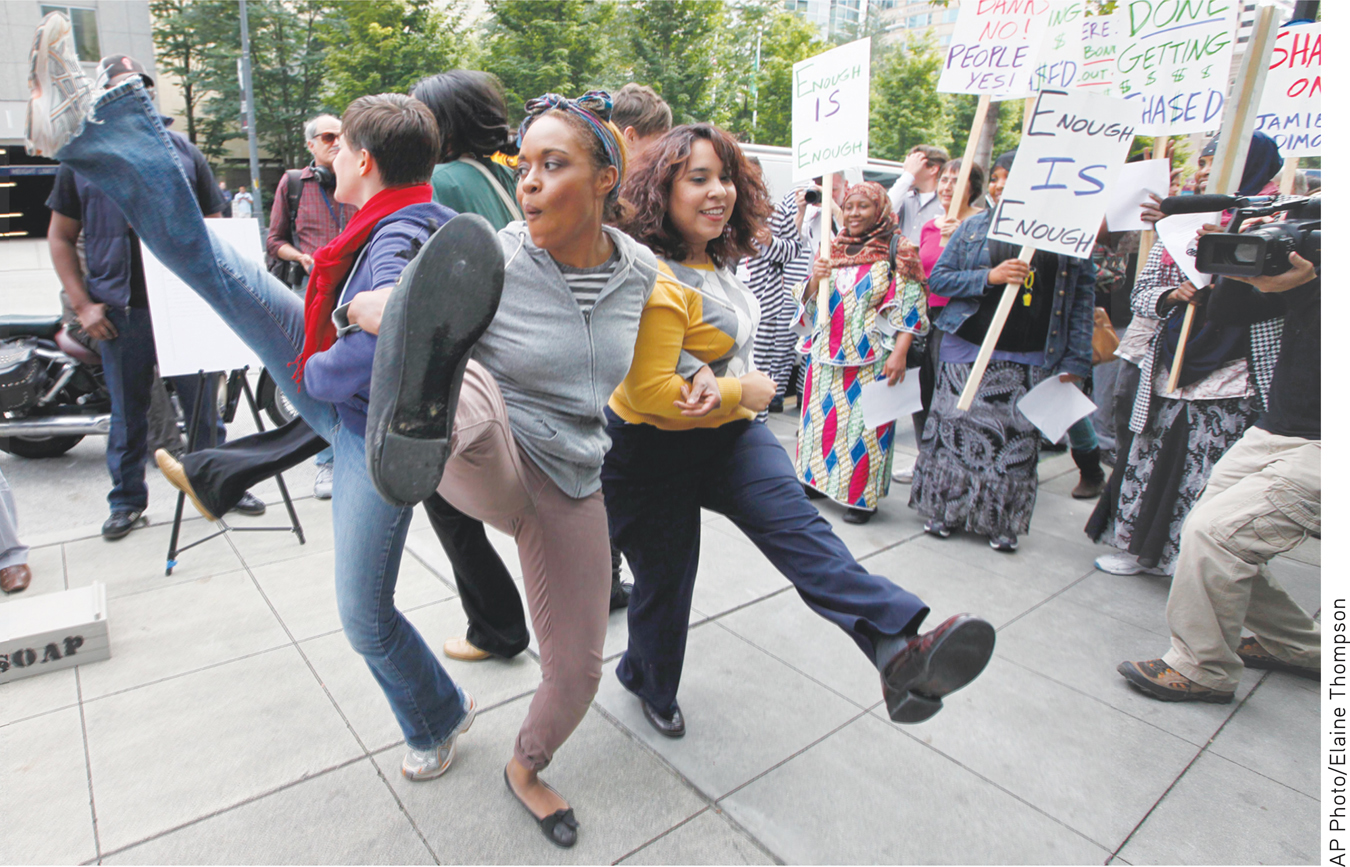
Many people think that psychologists are primarily—or even exclusively—interested in studying and treating psychological disorders and problems. But as this chapter will also show, psychologists are just as interested in “normal,” everyday behavior and mental processes—such as learning and memory, emotion and thought, relationships and loneliness. And, psychologists seek ways to use the knowledge that they discover through scientific research to optimize human performance and potential in many different fields, from classrooms to offices to the military.
The four basic goals of psychology are to describe, predict, explain, and control or influence behavior and mental processes. To illustrate how these goals guide psychological research, think about our classroom discussion. Most people, like Jenna, have an intuitive understanding of what the word “stress” refers to. Psychologists, however, seek to go beyond intuitive or “common sense” understandings of human experience.
Here’s how psychology’s goals might help guide research on stress:

Describe: Trying to objectively describe the experience of stress, Dr. Garcia studies the sequence of emotional responses that occur during stressful experiences.
Predict: Dr. Kiecolt investigates responses to different kinds of challenging events, hoping to be able to predict the kinds of events that are most likely to evoke a stress response.
Explain: Seeking to explain why some people are more vulnerable to the effects of stress than others, Dr. Lazarus studies the different ways that people respond to natural disasters.
Control or Influence: After studying the effectiveness of different coping strategies, Dr. Folkman helps people use those coping strategies to better control their reactions to stressful events.
How did psychology evolve into today’s diverse and rich science? We begin this introductory chapter by stepping backward in time to describe the early origins of psychology and its historical development. As you become familiar with how psychology began and developed, you’ll have a better appreciation for how it has come to encompass such diverse subjects. Indeed, the early history of psychology is the history of a field struggling to define itself as a separate and unique scientific discipline. The early psychologists debated such fundamental issues as:
What is the proper subject matter of psychology?
What methods should be used to investigate psychological issues?
Should psychological findings be used to change or enhance human behavior?
These debates helped set the tone of the new science, define its scope, and set its limits. Over the past century, the shifting focus of these debates has influenced the topics studied and the research methods used.
| Lot | x = square footage
(100s of sq. ft.) |
y = sales price
($1000s) |
|---|---|---|
| Harding St. | 75 | 155 |
| Newton Ave. | 125 | 210 |
| Stacy Ct. | 125 | 290 |
| Eastern Ave. | 175 | 360 |
| Second St. | 175 | 250 |
| Sunnybrook Rd. | 225 | 450 |
| Ahlstrand Rd. | 225 | 530 |
| Eastern Ave. | 275 | 635 |
Unnumbered table below
| To do | Check out | Topic |
|---|---|---|
| Exercises 9-12 | Example 1 | Predictor variables and response variables |
| Exercises 13a-20a | Example 2 | Constructing a scatterplot |
| Exercises 13b-20b and 21-26 |
Example 3 | Describing the relationship between x and y |
| Exercises 13c-20c and 31-34 |
Example 4 | Calculating the correlation coefficient r |
| Exercises 13d-20d and 27-30 |
Example 5 | Interpreting the correlation coefficient r |
Psychology’s Origins: THE INFLUENCE OF PHILOSOPHY AND PHYSIOLOGY
The earliest origins of psychology can be traced back several centuries to the writings of the great philosophers. More than 2,000 years ago, the Greek philosopher Aristotle wrote extensively about topics like sleep, dreams, the senses, and memory. Many of Aristotle’s ideas remained influential until the beginnings of modern science in the seventeenth century (Kheriaty, 2007).
At that time, the French philosopher René Descartes (1596–

Philosophers also laid the groundwork for another issue that would become central to psychology, the nature–
Such philosophical discussions influenced the topics that would be considered in psychology. But the early philosophers could advance the understanding of human behavior only to a certain point. Their methods were limited to intuition, observation, and logic.
The eventual emergence of psychology as a science hinged on advances in other sciences, particularly physiology. Physiology is a branch of biology that studies the functions and parts of living organisms, including humans. In the 1600s, physiologists were becoming interested in the human brain and its relation to behavior. By the early 1700s, it was discovered that damage to one side of the brain produced a loss of function in the opposite side of the body. By the early 1800s, the idea that different brain areas were related to different behavioral functions was being vigorously debated. Collectively, the early scientific discoveries made by physiologists were establishing the foundation for an idea that was to prove critical to the emergence of psychology—namely, that scientific methods could be applied to answering questions about behavior and mental processes.
Wilhelm Wundt: THE FOUNDER OF PSYCHOLOGY

By the second half of the 1800s, the stage had been set for the emergence of psychology as a distinct scientific discipline. The leading proponent of this idea was a German physiologist named Wilhelm Wundt (Gentile & Miller, 2009). Wundt used scientific methods to study fundamental psychological processes, such as mental reaction times in response to visual or auditory stimuli. For example, Wundt tried to measure precisely how long it took a person to consciously detect the sight and sound of a bell being struck.
A major turning point in psychology occurred in 1874, when Wundt outlined the connections between physiology and psychology in his landmark text, Principles of Physiological Psychology (Diamond, 2001). He also promoted his belief that psychology should be established as a separate scientific discipline that would use experimental methods to study mental processes. A few years later, in 1879, Wundt realized that goal when he opened the first psychology research laboratory at the University of Leipzig. Many regard this event as marking the formal beginning of psychology as an experimental science (Kohls & Benedikter, 2010).
Wundt defined psychology as the study of consciousness and emphasized the use of experimental methods to study and measure consciousness. Until he died in 1920, Wundt exerted a strong influence on the development of psychology as a science (Wong, 2009). Two hundred students from around the world traveled to Leipzig to earn doctorates in experimental psychology under Wundt’s direction. Over the years, some 17,000 students attended Wundt’s afternoon lectures on general psychology, which often included demonstrations of devices he had developed to measure mental processes (Blumenthal, 1998).
Edward B. Titchener: STRUCTURALISM
One of Wundt’s most devoted students was a young Englishman named Edward B. Titchener. After earning his doctorate in Wundt’s laboratory, Titchener began teaching at Cornell University in New York. There he established a psychology laboratory that ultimately spanned 26 rooms.
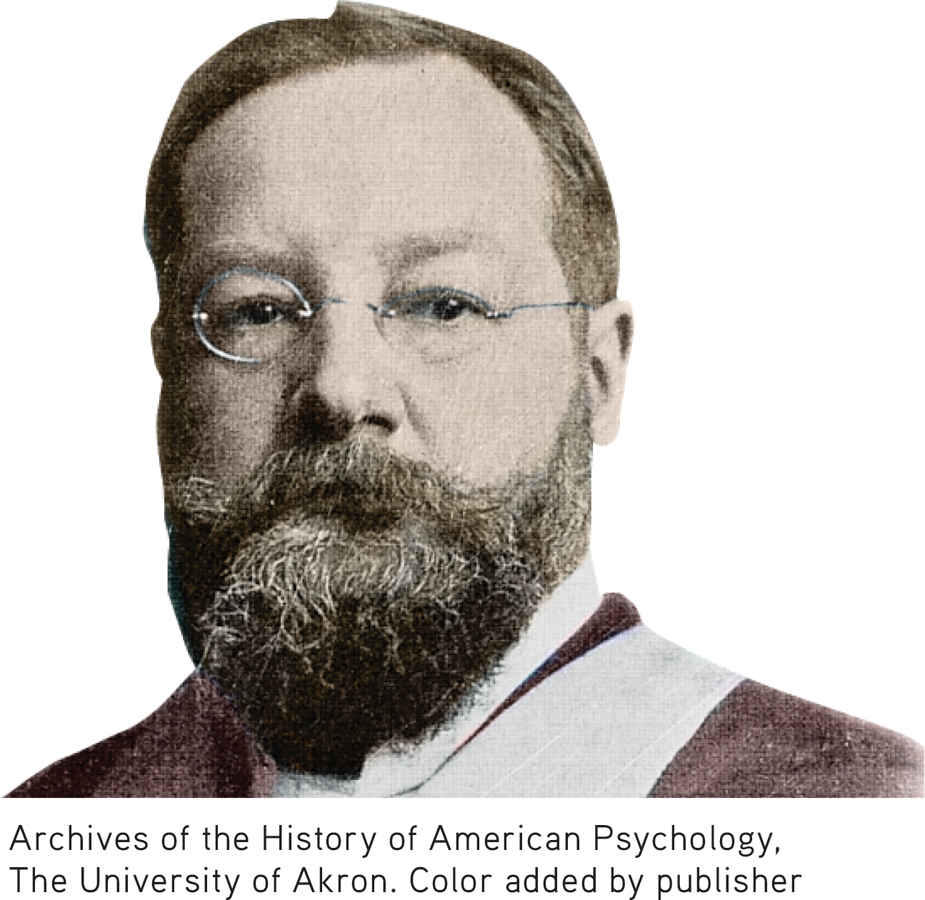
Titchener shared many of Wundt’s ideas about the nature of psychology. Eventually, however, Titchener developed his own approach, which he called structuralism. Structuralism became the first major school of thought in psychology. Structuralism held that even our most complex conscious experiences could be broken down into elemental structures, or component parts, of sensations and feelings. To identify these structures of conscious thought, Titchener trained subjects in a procedure called introspection. The subjects would view a simple stimulus, such as a book, and then try to reconstruct their sensations and feelings immediately after viewing it. (In psychology, a stimulus is anything perceptible to the senses, such as a sight, sound, smell, touch, or taste.) They might first report on the colors they saw, then the smells, and so on, in the attempt to create a total description of their conscious experience (Titchener, 1896).
structuralism
Early school of psychology that emphasized studying the most basic components, or structures, of conscious experiences.
In addition to being distinguished as the first school of thought in early psychology, Titchener’s structuralism holds the dubious distinction of being the first school to disappear. With Titchener’s death in 1927, structuralism as an influential school of thought in psychology essentially ended. But even before Titchener’s death, structuralism was often criticized for relying too heavily on the method of introspection.
As noted by Wundt and other scientists, introspection had significant limitations. First, introspection was an unreliable method of investigation. Different subjects often provided very different introspective reports about the same stimulus. Even subjects well trained in introspection varied in their responses to the same stimulus from trial to trial.
Second, introspection could not be used to study children or animals. Third, complex topics, such as learning, development, mental disorders, and personality, could not be investigated using introspection. In the end, the methods and goals of structuralism were simply too limited to accommodate the rapidly expanding interests of the field of psychology.
William James: FUNCTIONALISM

By the time Titchener arrived at Cornell University, psychology was already well established in the United States. The main proponent of American psychology was one of Harvard’s most outstanding teachers—William James. James had become intrigued by the emerging science of psychology after reading one of Wundt’s articles. But there were other influences on the development of James’s thinking.
Like many other scientists and philosophers of his generation, James was fascinated by the idea that different species had evolved over time (Menand, 2001). Many nineteenth-century scientists in England, France, and the United States were evolutionists—that is, they believed that species had not been created once and for all but had changed over time (Caton, 2007).
In the 1850s, British philosopher Herbert Spencer had published several works arguing that modern species, including humans, were the result of gradual evolutionary change. In 1859, Charles Darwin’s groundbreaking work, On the Origin of Species, was published. James and his fellow thinkers actively debated the notion of evolution, which came to have a profound influence on James’s ideas (Richardson, 2006). Like Darwin, James stressed the importance of adaptation to environmental challenges.
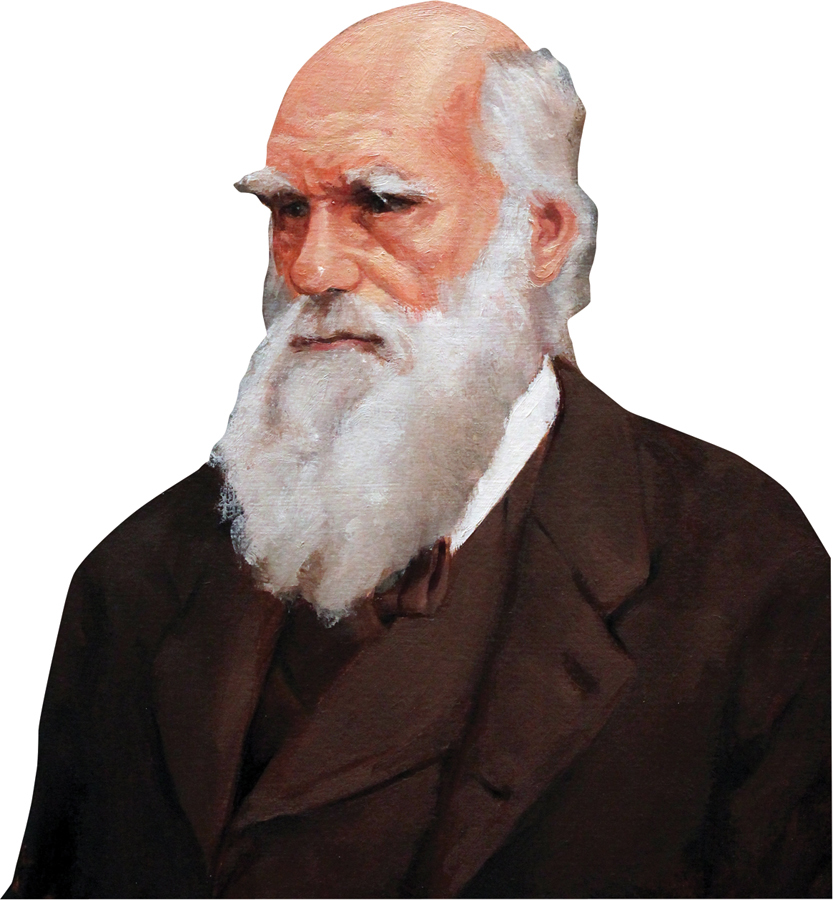
In the early 1870s, James began teaching a physiology and anatomy class at Harvard University. An intense, enthusiastic teacher, James was prone to changing the subject matter of his classes as his own interests changed (B. Ross, 1991). By the late 1870s, James was teaching classes devoted exclusively to the topic of psychology.
At about the same time, James began writing a comprehensive textbook of psychology, a task that would take him more than a decade. James’s Principles of Psychology was finally published in 1890. Despite its length of more than 1,400 pages, Principles of Psychology quickly became the leading psychology textbook. In it, James discussed such diverse topics as brain function, habit, memory, sensation, perception, and emotion. James’s views had an enormous impact on the development of psychology in the United States.
James’s ideas became the basis for a new school of psychology, called functionalism. Functionalism stressed the importance of how behavior functions to allow people and animals to adapt to their environments. Unlike structuralists, functionalists did not limit their methods to introspection. They expanded the scope of psychological research to include direct observation of living creatures in natural settings. They also examined how psychology could be applied to areas like education, child rearing, and the work environment.
functionalism
Early school of psychology that emphasized studying the purpose, or function, of behavior and mental experiences.
Both the structuralists and the functionalists thought that psychology should focus on the study of conscious experiences. But the functionalists had very different ideas about the nature of consciousness and how it should be studied. Rather than trying to identify the essential structures of consciousness at a given moment, James saw consciousness as an ongoing stream of mental activity that shifts and changes.
Like structuralism, functionalism no longer exists as a distinct school of thought in contemporary psychology. Nevertheless, functionalism’s twin themes of the importance of the adaptive role of behavior and the application of psychology to enhance human behavior continue to be evident in modern psychology.
WILLIAM JAMES AND HIS STUDENTS
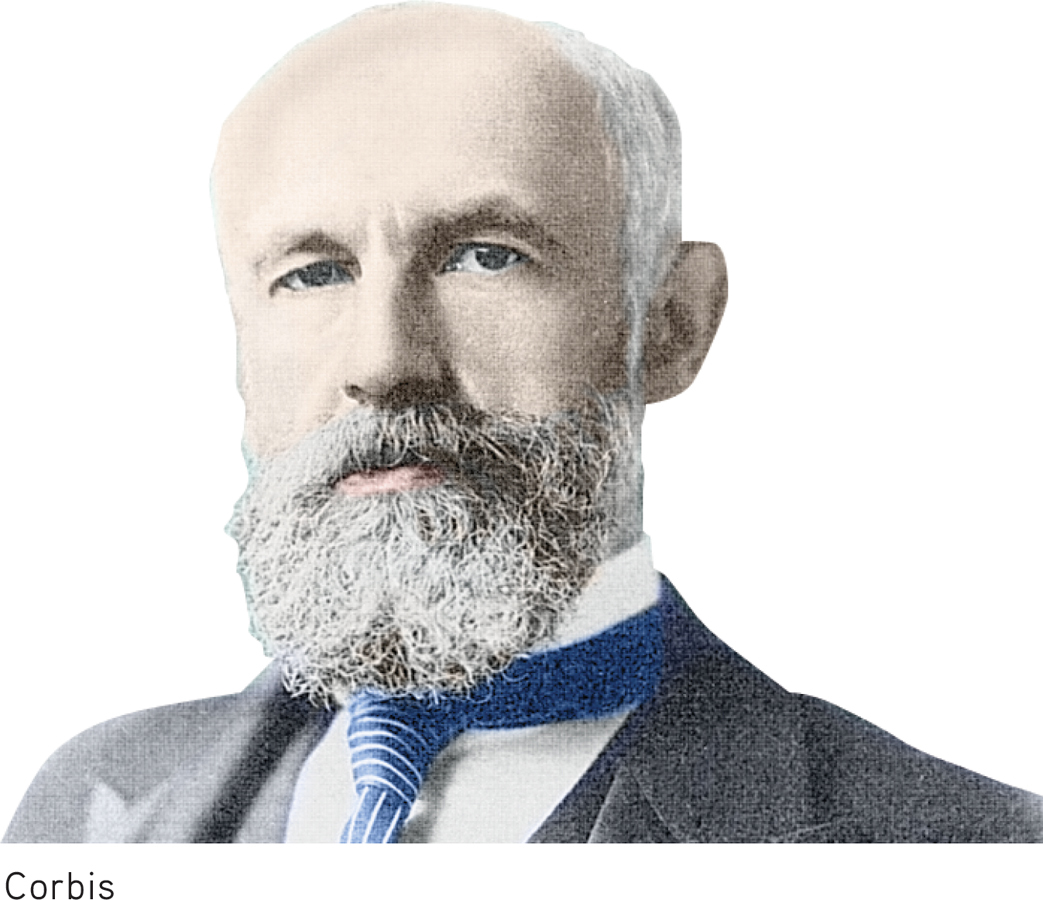
Like Wundt, James profoundly influenced psychology through his students, many of whom became prominent American psychologists. Two of James’s most notable students were G. Stanley Hall and Mary Whiton Calkins.
In 1878, G. Stanley Hall received the first Ph.D. in psychology awarded in the United States. Hall founded the first psychology research laboratory in the United States at Johns Hopkins University in 1883. He also began publishing the American Journal of Psychology, the first U.S. journal devoted to psychology. Most important, in 1892, Hall founded the American Psychological Association and was elected its first president (Anderson, 2012). Today, the American Psychological Association (APA) is the world’s largest professional organization of psychologists, with approximately 150,000 members.
In 1890, Mary Whiton Calkins was assigned the task of teaching experimental psychology at a new women’s college—Wellesley College. Calkins studied with James at nearby Harvard University. She completed all the requirements for a Ph.D. in psychology. However, Harvard refused to grant her the Ph.D. degree because she was a woman and at the time Harvard was not a coeducational institution (Pickren & Rutherford, 2010).
Although never awarded the degree she had earned, Calkins made several notable contributions to psychology. She conducted research in many areas, including dreams, memory, and personality. In 1891, she established a psychology laboratory at Wellesley College. At the turn of the twentieth century, she wrote a well-received textbook, titled Introduction to Psychology. In 1905, Calkins was elected president of the American Psychological Association—the first woman, but not the last, to hold that position.
Just for the record, the first American woman to earn an official Ph.D. in psychology was Margaret Floy Washburn. Washburn was Edward Titchener’s first doctoral student at Cornell University. She strongly advocated the scientific study of the mental processes of different animal species. In 1908, she published an influential text, titled The Animal Mind. Her book summarized research on sensation, perception, learning, and other “inner experiences” of different animal species. In 1921, Washburn became the second woman elected president of the American Psychological Association (Viney & Burlingame-Lee, 2003).
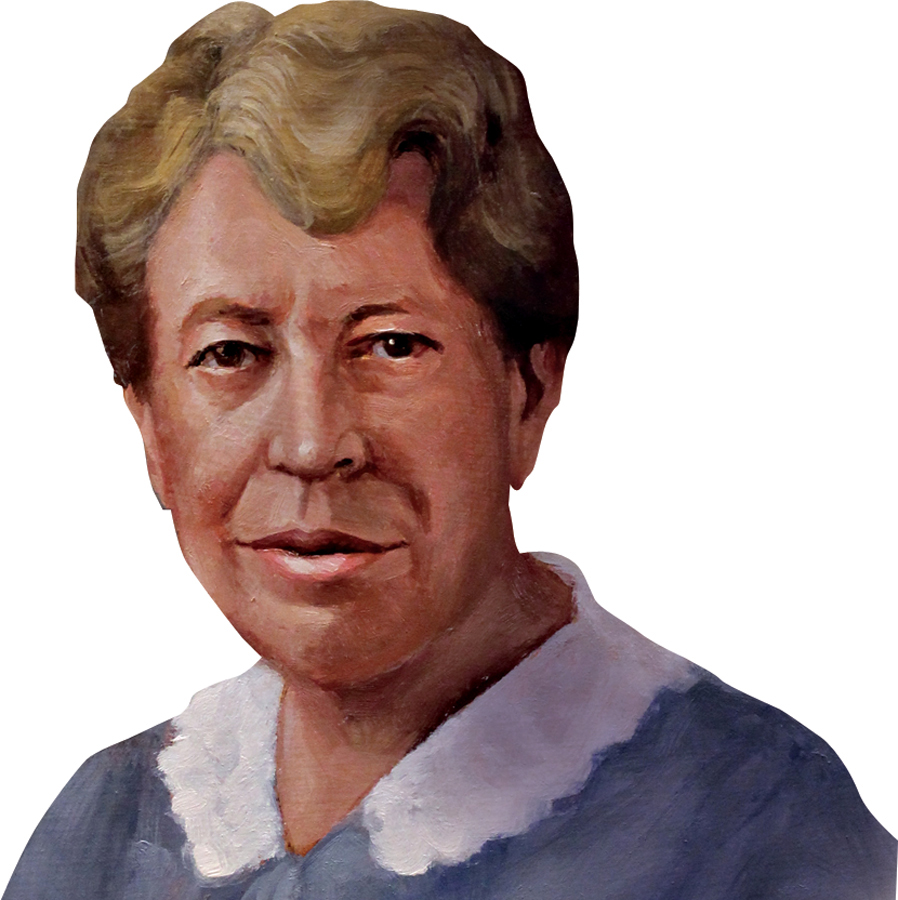
Finally, one of G. Stanley Hall’s notable students was Francis C. Sumner. Sumner was the first African American to receive a Ph.D. in psychology, awarded by Clark University in 1920. After teaching at several southern universities, Sumner moved to Howard University in Washington, D.C. At Howard he published papers on a wide variety of topics and chaired a psychology department that produced more African American psychologists than all other American colleges and universities combined (Guthrie, 2000, 2004). One of Sumner’s most famous students was Kenneth Bancroft Clark. Clark’s research on the negative effects of discrimination was instrumental in the U.S. Supreme Court’s 1954 decision to end segregation in schools (Jackson, 2006). In 1970, Clark became the first African American president of the American Psychological Association (Belgrave & Allison, 2010).

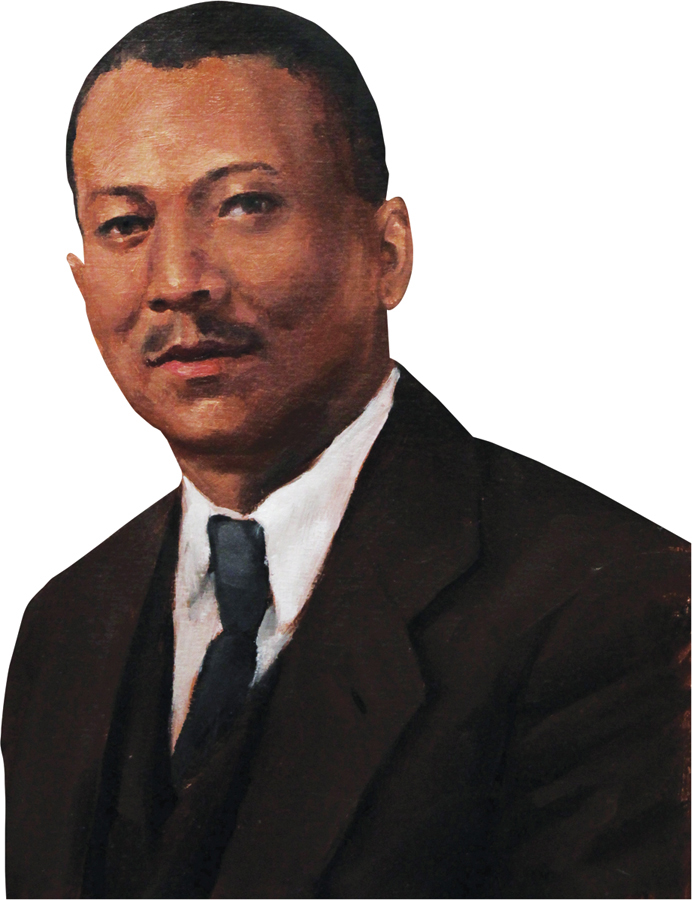
Sigmund Freud: PSYCHOANALYSIS
MYTH !lhtriangle! SCIENCE
Is it true that Sigmund Freud was the first psychologist?
Wundt, James, and other early psychologists emphasized the study of conscious experiences. But at the turn of the twentieth century, new approaches challenged the principles of both structuralism and functionalism.
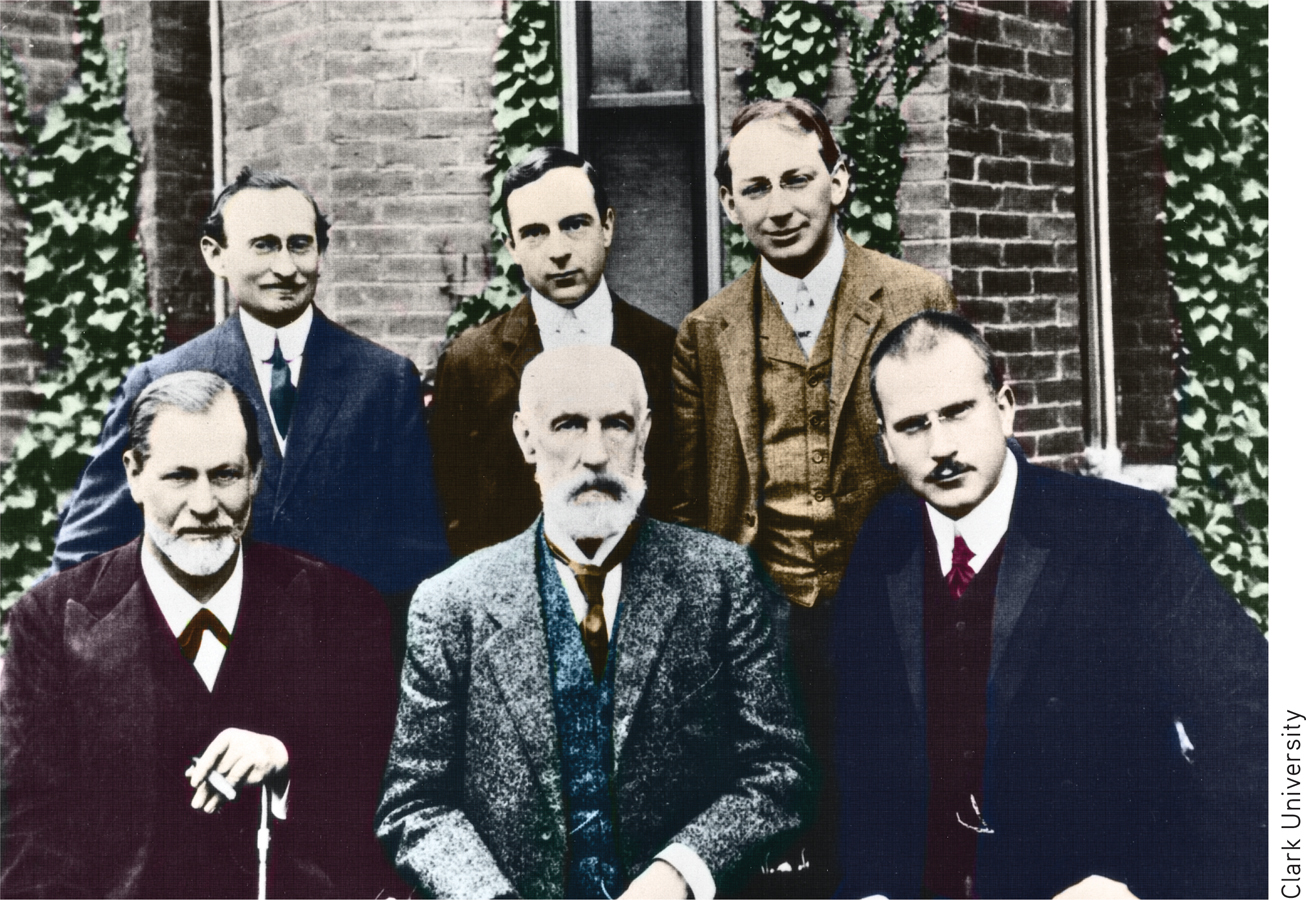
In Vienna, Austria, a physician named Sigmund Freud was developing an intriguing theory of personality based on uncovering causes of behavior that were unconscious, or hidden from the person’s conscious awareness. Freud’s school of thought, called psychoanalysis, emphasized the role of unconscious conflicts in determining behavior and personality. Freud himself was a neurologist, not a psychologist. Nevertheless, psychoanalysis had a strong influence on psychological thinking in the early part of the century.
psychoanalysis
Personality theory and form of psychotherapy that emphasizes the role of unconscious factors in personality and behavior.
Freud’s psychoanalytic theory of personality and behavior was based largely on his work with his patients and on insights derived from self-analysis. Freud believed that human behavior was motivated by unconscious conflicts that were almost always sexual or aggressive in nature. Past experiences, especially childhood experiences, were thought to be critical in the formation of adult personality and behavior. According to Freud (1904), glimpses of these unconscious impulses are revealed in everyday life in dreams, memory blocks, slips of the tongue, and spontaneous humor. Freud believed that when unconscious conflicts became extreme, psychological disorders could result.
Freud’s psychoanalytic theory of personality also provided the basis for a distinct form of psychotherapy. Many of the fundamental ideas of psychoanalysis continue to influence psychologists and other professionals in the mental health field. We’ll explore Freud’s theory in more depth in Chapter 11, on personality, and Chapter 15, on psychotherapy.
John B. Watson: BEHAVIORISM
The course of psychology changed dramatically in the early 1900s when another approach, called behaviorism, emerged as a dominating force. Behaviorism rejected the emphasis on consciousness promoted by structuralism and functionalism. It also flatly rejected Freudian notions about unconscious influences, claiming that such ideas were unscientific and impossible to test. Instead, behaviorism contended that psychology should focus its scientific investigations strictly on overt behavior—observable behaviors that could be objectively measured and verified.
behaviorism
School of psychology and theoretical viewpoint that emphasizes the study of observable behaviors, especially as they pertain to the process of learning.
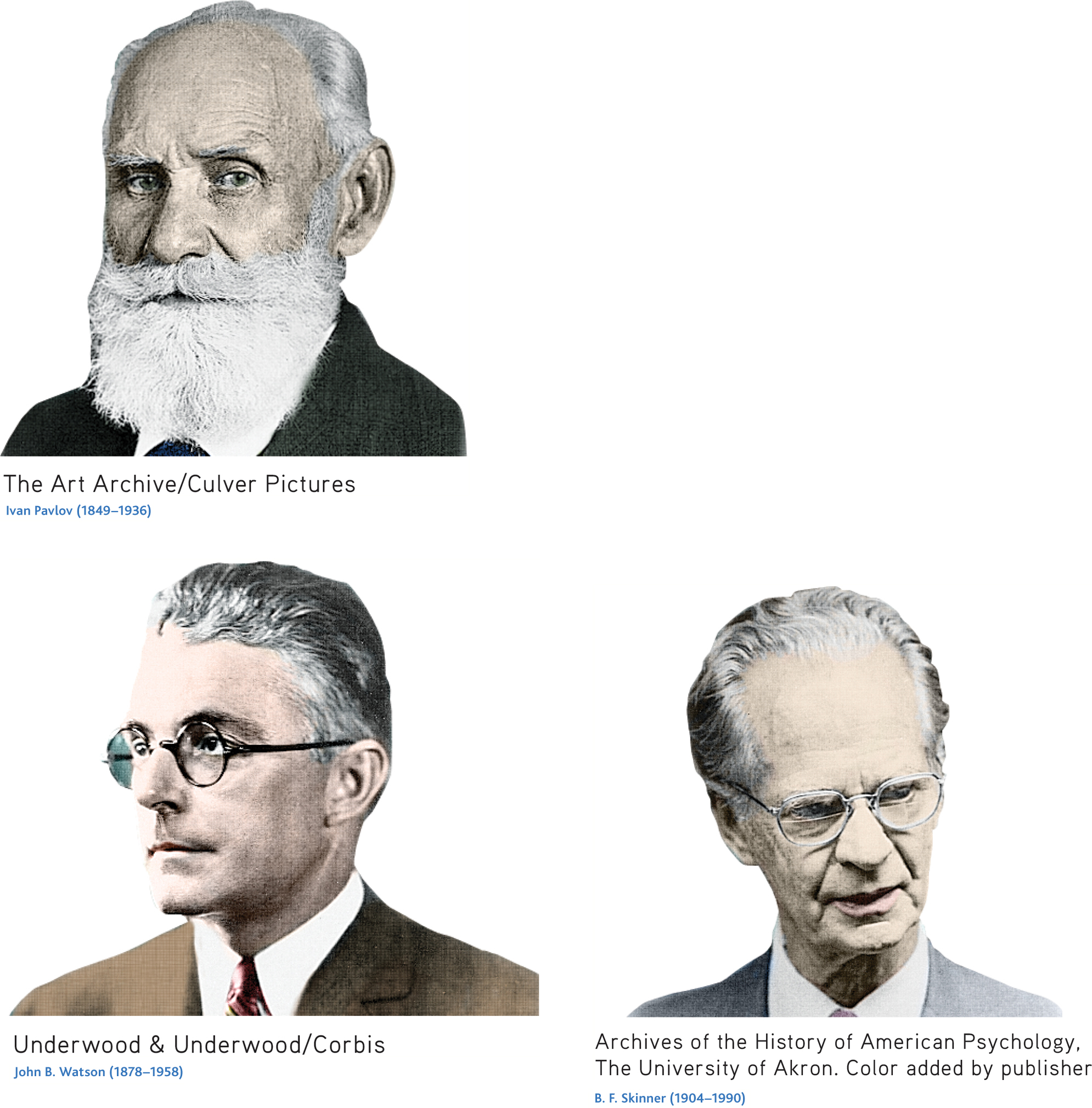
Behaviorism is another example of the influence of physiology on psychology. Behaviorism grew out of the pioneering work of a Russian physiologist named Ivan Pavlov. Pavlov demonstrated that dogs could learn to associate a neutral stimulus, such as the sound of a bell, with an automatic behavior, such as reflexively salivating to food. Once an association between the sound of the bell and the food was formed, the sound of the bell alone would trigger the salivation reflex in the dog. Pavlov enthusiastically believed he had discovered the mechanism by which all behaviors were learned.
In the United States, a young, dynamic psychologist named John B. Watson shared Pavlov’s enthusiasm. Watson (1913) championed behaviorism as a new school of psychology. Structuralism was still an influential perspective, but Watson strongly objected to both its method of introspection and its focus on conscious mental processes. As Watson (1924) wrote in his classic book, Behaviorism:
Behaviorism, on the contrary, holds that the subject matter of human psychology is the behavior of the human being. Behaviorism claims that consciousness is neither a definite nor a usable concept. The behaviorist, who has been trained always as an experimentalist, holds, further, that belief in the existence of consciousness goes back to the ancient days of superstition and magic.
The influence of behaviorism on American psychology was enormous. The goal of the behaviorists was to discover the fundamental principles of learning—how behavior is acquired and modified in response to environmental influences. For the most part, the behaviorists studied animal behavior under carefully controlled laboratory conditions.
Although Watson left academic psychology in the early 1920s, behaviorism was later championed by an equally forceful proponent—the famous American psychologist B. F. Skinner. Like Watson, Skinner believed that psychology should restrict itself to studying outwardly observable behaviors that could be measured and verified. In compelling experimental demonstrations, Skinner systematically used reinforcement or punishment to shape the behaviorc of rats and pigeons.
Between Watson and Skinner, behaviorism dominated American psychology for almost half a century. During that time, the study of conscious experiences was largely ignored as a topic in psychology (Baars, 2005). In Chapter 5, on learning, we’ll look at the lives and contributions of Pavlov, Watson, and Skinner in greater detail.
Carl Rogers: HUMANISTIC PSYCHOLOGY

For several decades, behaviorism and psychoanalysis were the perspectives that most influenced the thinking of American psychologists. In the 1950s, a new school of thought emerged, called humanistic psychology. Because humanistic psychology was distinctly different from both psychoanalysis and behaviorism, it was sometimes referred to as the “third force” in American psychology (Waterman, 2013; Watson & others, 2011).
humanistic psychology
School of psychology and theoretical viewpoint that emphasizes each person’s unique potential for psychological growth and self-direction.
Humanistic psychology was largely founded by American psychologist Carl Rogers (Elliott & Farber, 2010). Like Freud, Rogers was influenced by his experiences with his psychotherapy clients. However, rather than emphasizing unconscious conflicts, Rogers emphasized the conscious experiences of his clients, including each person’s unique potential for psychological growth and self-direction. In contrast to the behaviorists, who saw human behavior as being shaped and maintained by external causes, Rogers emphasized self-determination, free will, and the importance of choice in human behavior (Elliott & Farber, 2010; Kirschenbaum & Jourdan, 2005).
Abraham Maslow was another advocate of humanistic psychology. Maslow developed a theory of motivation that emphasized psychological growth, which we’ll discuss in Chapter 8. Like psychoanalysis, humanistic psychology included not only influential theories of personality but also a form of psychotherapy, which we’ll discuss in later chapters.
By briefly stepping backward in time, you’ve seen how the debates among the key thinkers in psychology’s history shaped the development of psychology as a whole. Each of the schools that we’ve described had an impact on the topics and methods of psychological research. As you’ll see throughout this textbook, that impact has been a lasting one. In the next sections, we’ll touch on some of the more recent developments in psychology’s evolution. We’ll also explore the diversity that characterizes contemporary psychology.
CONCEPT REVIEW 1.1
Major Schools in Psychology
Identify the school or approach and the founder associated with each of the following statements.
Question 1.1
| 1. | Psychology should study how behavior and mental processes allow organisms to adapt to their environments. |
School/Approach KSNdR2xfuYgIStMBsBZ/jZvHSBs=
Founder(s) HN7GvmLhsETiAua6E3a74GDmcpA=
Question 1.2
| 2. | Psychology should emphasize each person’s unique potential for psychological growth and self-directedness. |
School/Approach Kp+VwuNegaezAr7kkMZswqVMIRLhtCT/glIY3g==
Founder(s) Ghz/FBtLq5ueqTGbxR5jZg==
Question 1.3
| 3. | Psychology should focus on the elements of conscious experiences, using the method of introspection. |
School/Approach M5PQOH+JfRZlFcQVeqSeobzq+zE=
Founder(s) EJK0WP6Z1xvHthE0inwM+Y4t+YA=
| Lot | x = square footage
(100s of sq. ft.) |
y = sales price
($1000s) |
|---|---|---|
| Harding St. | 75 | 155 |
| Newton Ave. | 125 | 210 |
| Stacy Ct. | 125 | 290 |
| Eastern Ave. | 175 | 360 |
| Second St. | 175 | 250 |
| Sunnybrook Rd. | 225 | 450 |
| Ahlstrand Rd. | 225 | 530 |
| Eastern Ave. | 275 | 635 |
Question 1.4
| 4. | Human behavior is strongly influenced by unconscious sexual and aggressive conflicts. |
School/Approach pA5HAMW2F3S+4UEbAYdm2+Z6pFA=
Founder(s) pQcWg00UhChfkiuA1MQgT7cxOZQ=
Question 1.5
| 5. | Psychology should scientifically investigate observable behaviors that can be measured objectively and should not study consciousness or mental processes. |
School/Approach 1xAzL199JkB48CnwvtSv9Q==
Founder(s) 8hLNpXhbI3JBN2iWi+O/nA==
Test your understanding of The Origins of Psychology with
 .
.
1.2 Contemporary Psychology
KEY THEME
As psychology has developed as a scientific discipline, the topics it investigates have become progressively more diverse.
KEY QUESTIONS
How do the perspectives in contemporary psychology differ in emphasis and approach?
How do psychiatry and psychology differ, and what are psychology’s major specialty areas?
Over the past half-century, the range of topics in psychology has become progressively more diverse. And, as psychology’s knowledge base has increased, psychology itself has become more specialized. Rather than being dominated by a particular approach or school of thought, today’s psychologists tend to identify themselves according to (1) the perspective they emphasize in investigating psychological topics and (2) the specialty area in which they have been trained and practice.
Major Perspectives in Psychology
Any given topic in contemporary psychology can be approached from a variety of perspectives. Each perspective discussed here represents a different emphasis or point of view that can be taken in studying a particular behavior, topic, or issue. As you’ll see in this section, the influence of the early schools of psychology is apparent in the first four perspectives that characterize contemporary psychology.
THE BIOLOGICAL PERSPECTIVE
As we’ve already noted, physiology has played an important role in psychology since it was founded. Today, that influence continues, as is shown by the many psychologists who take the biological perspective. The biological perspective emphasizes studying the physical bases of human and animal behavior, including the nervous system, endocrine system, immune system, and genetics. More specifically, neuroscience refers to the study of the nervous system, especially the brain.
neuroscience
The study of the nervous system, especially the brain.
Advances in medicine and technology have reinforced interest in the biological perspective. The discovery of drugs that helped control the symptoms of severe psychological disorders sparked questions about the interaction among biological factors and human behavior, emotions, and thought processes.
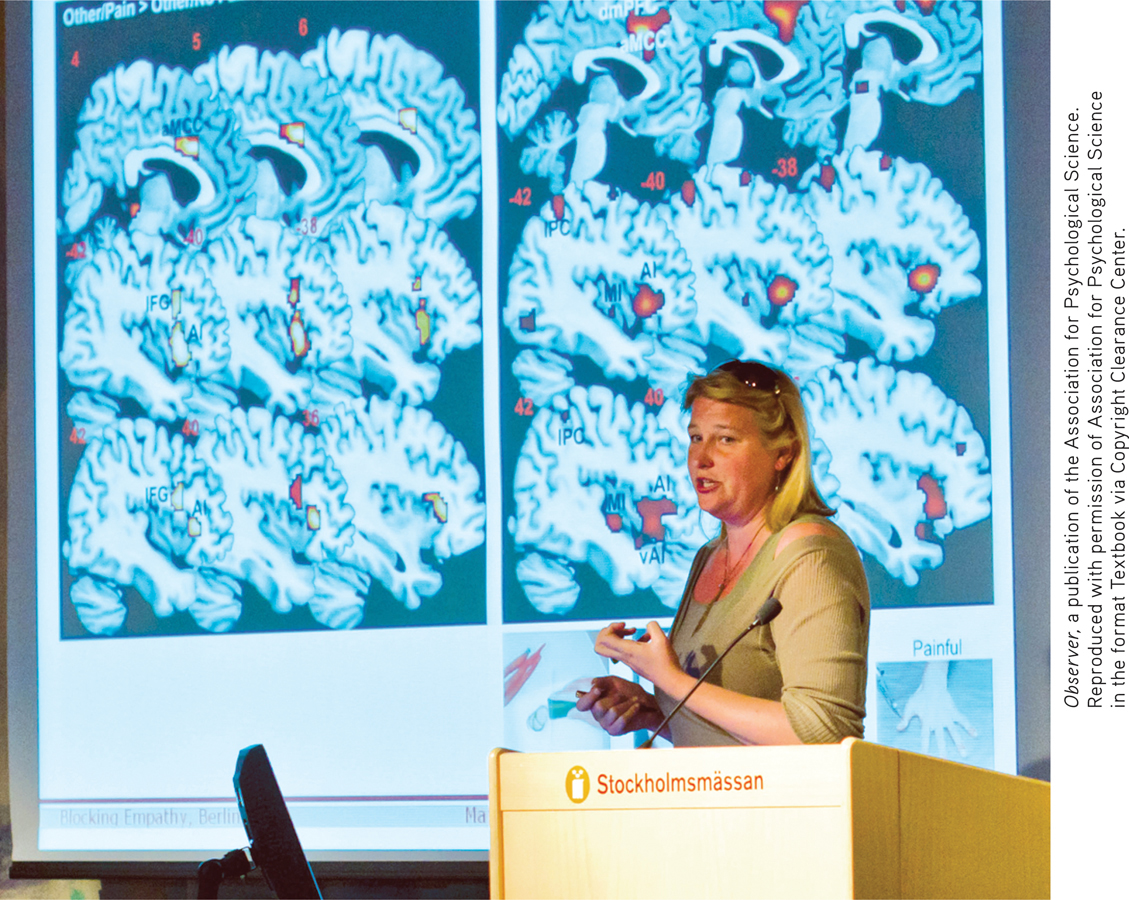
Equally important have been technological advances that have allowed psychologists and other researchers to explore the human brain as never before. The development of sophisticated brain-scanning techniques, including the PET scan, MRI scan, and functional MRI (fMRI) scan, allowed neuroscientists to study the structure and activity of the intact, living brain. Later in the chapter, we’ll describe these brain-imaging techniques and identify how psychologists use them as research tools.
THE PSYCHODYNAMIC PERSPECTIVE
The key ideas and themes of Freud’s landmark theory of psychoanalysis continue to be important among many psychologists, especially those working in the mental health field. As you’ll see in Chapter 11, on personality, and Chapter 15, on therapies, many of Freud’s ideas have been expanded or modified by his followers. Today, psychologists who take the psychodynamic perspective may or may not follow Freud or take a psychoanalytic approach. However, they do tend to emphasize the importance of unconscious influences, early life experiences, and interpersonal relationships in explaining the underlying dynamics of behavior or in treating people with psychological problems.

THE BEHAVIORAL PERSPECTIVE
Watson and Skinner’s contention that psychology should focus on observable behaviors and the fundamental laws of learning is evident today in the behavioral perspective. Contemporary psychologists who take the behavioral perspective continue to study how behavior is acquired or modified by environmental causes. Many psychologists who work in the area of mental health also emphasize the behavioral perspective in explaining and treating psychological disorders. In Chapter 5, on learning, and Chapter 15, on therapies, we’ll discuss different applications of the behavioral perspective.
THE HUMANISTIC PERSPECTIVE
The influence of the work of Carl Rogers and Abraham Maslow continues to be seen among contemporary psychologists who take the humanistic perspective (Serlin, 2012; Waterman, 2013). The humanistic perspective focuses on the motivation of people to grow psychologically, the influence of interpersonal relationships on a person’s self-concept, and the importance of choice and self-direction in striving to reach one’s potential. Like the psychodynamic perspective, the humanistic perspective is often emphasized among psychologists working in the mental health field. You’ll encounter the humanistic perspective in the chapters on motivation (8), personality (11), and therapies (15).
THE POSITIVE PSYCHOLOGY PERSPECTIVE
The humanistic perspective’s emphasis on psychological growth and human potential contributed to the recent emergence of a new perspective. Positive psychology is a field of psychological research and theory focusing on the study of positive emotions and psychological states, positive individual traits, and the social institutions that foster those qualities in individuals and communities (Csikszentmihalyi & Nakamura, 2011; Peterson, 2006; Seligman & others, 2005). By studying the conditions and processes that contribute to the optimal functioning of people, groups, and institutions, positive psychology seeks to counterbalance psychology’s traditional emphasis on psychological problems and disorders (McNulty & Fincham, 2012).
positive psychology
The study of positive emotions and psychological states, positive individual traits, and the social institutions that foster positive individuals and communities.
Topics that fall under the umbrella of positive psychology include personal happiness, optimism, creativity, resilience, character strengths, and wisdom. Positive psychology is also focused on developing therapeutic techniques that increase personal well-being rather than just alleviating the troubling symptoms of psychological disorders (Snyder & others, 2011). Insights from positive psychology research will be evident in many chapters, including the chapters on motivation and emotion (8); personality (11); stress, health, and coping (13); and therapies (15).
THE COGNITIVE PERSPECTIVE
During the 1960s, psychology experienced a return to the study of how mental processes influence behavior. Often referred to as “the cognitive revolution” in psychology, this movement represented a break from traditional behaviorism. Cognitive psychology focused once again on the important role of mental processes in how people process and remember information, develop language, solve problems, and think.
The development of the first computers in the 1950s contributed to the cognitive revolution. Computers gave psychologists a new model for conceptualizing human mental processes—human thinking, memory, and perception could be understood in terms of an information-processing model. We’ll consider the cognitive perspective in several chapters, including Chapter 7, on thinking, language, and intelligence. The cognitive perspective has also influenced other areas of psychology, including personality (Chapter 11) and psychotherapy (Chapter 15).
THE CROSS-CULTURAL PERSPECTIVE

More recently, psychologists have taken a closer look at how cultural factors influence patterns of behavior—the essence of the cross-cultural perspective. By the late 1980s, cross-cultural psychology had emerged in full force as large numbers of psychologists began studying the diversity of human behavior in different cultural settings and countries (Kitayama & Uskul, 2011; P. Smith, 2010). In the process, psychologists discovered that some well-established psychological findings were not as universal as they had thought.
For example, one well-established psychological finding was that people exert more effort on a task when working alone than when working as part of a group, a phenomenon called social loafing. First demonstrated in the 1970s, social loafing was a consistent finding in several psychological studies conducted with American and European subjects. But when similar studies were conducted with Chinese participants, the opposite was found to be true (Hong & others, 2008). Chinese participants worked harder on a task when they were part of a group than when they were working alone.
Today, psychologists are keenly attuned to the influence of cultural factors on behavior (Heine, 2010; Henrich & others, 2010). Although many psychological processes are shared by all humans, it’s important to keep in mind that there are cultural variations in behavior. Thus, we have included Culture and Human Behavior boxes throughout this textbook to help sensitize you to the influence of culture on behavior—including your own. We describe cross-cultural psychology in more detail in the Culture and Human Behavior box below.
CULTURE AND HUMAN BEHAVIOR
What Is Cross-Cultural Psychology?
All cultures are simultaneously very similar and very different.
—Harry Triandis (2005)
People around the globe share many attributes: We all eat, sleep, form families, seek happiness, and mourn losses. Yet the way in which we express our human qualities can vary considerably among cultures. What we eat, where we sleep, and how we form families, define happiness, and express sadness can differ greatly in different cultures.
Culture is a broad term that refers to the attitudes, values, beliefs, and behaviors shared by a group of people and communicated from one generation to another (Cohen, 2009, 2010). When this broad definition is applied to people throughout the world, about 4,000 different cultures can be said to exist. Studying the differences among those cultures and the influences of culture on behavior are the fundamental goals of cross-cultural psychology.
culture
The attitudes, values, beliefs, and behaviors shared by a group of people and communicated from one generation to another.
cross-cultural psychology
Branch of psychology that studies the effects of culture on behavior and mental processes.
A person’s sense of cultural identity is influenced by such factors as ethnic background, nationality, race, religion, and language. As we grow up within a given culture, we learn our culture’s norms, or unwritten rules of behavior. Once those cultural norms are understood and internalized, we tend to act in accordance with them without too much thought. For example, according to the dominant cultural norms in the United States, infants and toddlers are not supposed to routinely sleep in the same bed as their parents. In many other cultures around the world, however, it’s taken for granted that babies will sleep in the same bed as their parents or other adult relatives (Mindell & others, 2010a, b). Members of these other cultures are often surprised and even shocked at the U.S. practice of separating babies from their parents at night. (In the Culture and Human Behavior box in Chapter 9, we discuss this topic at greater length.)
Whether considering sleeping habits or hairstyles, most people share a natural tendency to accept their own cultural rules as defining what’s “normal.” This tendency to use your own culture as the standard for judging other cultures is called ethnocentrism. Although it may be a natural tendency, ethnocentrism can lead to the inability to separate ourselves from our own cultural backgrounds and biases so that we can understand the behaviors of others (Bizumic & others, 2009). Ethnocentrism may also prevent us from being aware of how our behavior has been shaped by our own culture.
ethnocentrism
The belief that one’s own culture or ethnic group is superior to all others and the related tendency to use one’s own culture as a standard by which to judge other cultures.
Some degree of ethnocentrism is probably inevitable, but extreme ethnocentrism can lead to intolerance toward other cultures. If we believe that our way of seeing things or behaving is the only proper one, other ways of behaving and thinking may seem not only foreign, but also ridiculous, inferior, wrong, or immoral.
In addition to influencing how we behave, culture affects how we define our sense of self (Markus & Kitayama, 1991, 1998, 2010). For the most part, the dominant cultures of the United States, Canada, Australia, New Zealand, and Europe can be described as individualistic cultures. Individualistic cultures emphasize the needs and goals of the individual over the needs and goals of the group (Henrich, 2014; Markus & Kitayama, 2010). In individualistic societies, social behavior is more strongly influenced by individual preferences and attitudes than by cultural norms and values. In such cultures, the self is seen as independent, autonomous, and distinctive. Personal identity is defined by individual achievements, abilities, and accomplishments.
individualistic cultures
Cultures that emphasize the needs and goals of the individual over the needs and goals of the group.

In contrast, collectivistic cultures emphasize the needs and goals of the group over the needs and goals of the individual. Social behavior is more heavily influenced by cultural norms and social context than by individual preferences and attitudes (Owe & others, 2013; Talhelm & others, 2014). In a collectivistic culture, the self is seen as being much more interdependent with others. Relationships with others and identification with a larger group, such as the family or tribe, are key components of personal identity. The cultures of Asia, Africa, and Central and South America tend to be collectivistic. According to cross-cultural psychologist Harry Triandis (2005), about two-thirds of the world’s population live in collectivistic cultures.
collectivistic cultures
Cultures that emphasize the needs and goals of the group over the needs and goals of the individual.
The distinction between individualistic and collectivistic societies is useful in cross-cultural psychology. Nevertheless, psychologists are careful not to assume that these generalizations are true of every member or every aspect of a given culture (Kitayama & Uskul, 2011). Most cultures are neither completely individualistic nor completely collectivistic, but fall somewhere between the two extremes. Equally important, psychologists recognize that there is a great deal of individual variation among the members of every culture (Heine & Norenzayan, 2006). It’s important to keep that qualification in mind when cross-cultural findings are discussed, as they will be throughout this book.
The Culture and Human Behavior boxes that we have included in this book will help you learn about human behavior in other cultures. They will also help you understand how culture affects your behavior, beliefs, attitudes, and values as well. We hope you will find this feature both interesting and enlightening!

Steve Prezant/Corbis
THE EVOLUTIONARY PERSPECTIVE
Evolutionary psychology refers to the application of the principles of evolution to explain psychological processes and phenomena (Buss, 2009, 2011a). The evolutionary perspective reflects a renewed interest in the work of English naturalist Charles Darwin. As noted previously, Darwin’s (1859) first book on evolution, On the Origin of Species, played an influential role in the thinking of many early psychologists.
evolutionary psychology
The application of principles of evolution, including natural selection, to explain psychological processes and phenomena.
The theory of evolution proposes that the individual members of a species compete for survival. Because of inherited differences, some members of a species are better adapted to their environment than are others. Organisms that inherit characteristics that increase their chances of survival in their particular habitat are more likely to survive, reproduce, and pass on their characteristics to their offspring. But individuals that inherit less useful characteristics are less likely to survive, reproduce, and pass on their characteristics. This process reflects the principle of natural selection: The most adaptive characteristics are “selected” and perpetuated in the next generation.
Psychologists who take the evolutionary perspective assume that psychological processes are also subject to the principle of natural selection. As David Buss (2008) writes, “An evolved psychological mechanism exists in the form that it does because it solved a specific problem of survival or reproduction recurrently over evolutionary history.” That is, those psychological processes that helped individuals adapt to their environments also helped them survive, reproduce, and pass those abilities on to their offspring (Confer & others, 2010). However, as you’ll see in later chapters, some of those processes may not necessarily be adaptive in our modern world (Loewenstein, 2010; Tooby & Cosmides, 2008).
Specialty Areas in Psychology
Many people think that psychologists primarily diagnose and treat people with psychological problems or disorders. In fact, psychologists who specialize in clinical psychology are trained in the diagnosis, treatment, causes, and prevention of psychological disorders, leading to a doctorate in clinical psychology.
In contrast, psychiatry is a medical specialty. A psychiatrist has earned a medical degree, either an M.D. or D.O., followed by several years of specialized training in the treatment of mental disorders. As physicians, psychiatrists can hospitalize people, order biomedical therapies such as electroconvulsive therapy (ECT), and prescribe medications. Clinical psychologists are not medical doctors and cannot order medical treatments. However, a few states have passed legislation allowing clinical psychologists to prescribe medications after specialized training (McGrath, 2010).
psychiatry
Medical specialty area focused on the diagnosis, treatment, causes, and prevention of mental and behavioral disorders.
As you’ll learn, contemporary psychology is a very diverse discipline that ranges far beyond the treatment of psychological problems. This diversity is reflected in FIGURE 1.1, which shows the range of specialty areas and employment settings for psychologists. TABLE 1.1 provides a brief overview of psychology’s most important specialty areas.

Source: Data from Finno & others (2006); NSF/NIH/USED/USDA/NEH/ NASA, 2009 Survey of Earned Doctorates.
Major Specialties in Psychology
| Speciality | Major Focus |
|---|---|
| Biological psychology | Relationship between psychological processes and the body’s physical systems; neuroscience refers specifically to the brain and the rest of the nervous system. |
| Clinical psychology | Causes, diagnosis, treatment, and prevention of psychological disorders. |
| Cognitive psychology | Mental processes, including reasoning and thinking, problem solving, memory, perception, mental imagery, and language. |
| Counseling psychology | Helping people adjust, adapt, and cope with personal and interpersonal challenges; improving well-being, alleviating distress and maladjustment, and resolving crises. |
| Developmental psychology | Physical, social, and psychological changes that occur at different ages and stages of the life span. |
| Educational psychology | Applying psychological principles and theories to methods of learning. |
| Experimental psychology | Basic psychological processes, including sensory and perceptual processes, and principles of learning, emotion, and motivation. |
| Health psychology | Psychological factors in the development, prevention, and treatment of illness; stress and coping; promoting health-enhancing behaviors. |
| Industrial/Organizational psychology | The relationship between people and work. |
| Personality psychology | The nature of human personality, including the uniqueness of each person, traits, and individual differences. |
| Social psychology | How an individual’s thoughts, feelings, and behavior are affected by their social environments and by the presence of other people. |
| School psychology | Applying psychological principles and findings in primary and secondary schools. |
| Applied psychology | Applying the findings of basic psychology to diverse areas; examples include sports psychology, media psychology, forensic psychology, rehabilitation psychology. |
CONCEPT REVIEW 1.2
Identifying Perspectives and Specialties
For each of the following psychologists’ statements, fill in the blanks, identifying the perspective and specialty area.
Question 1.6
| 1. | I study brain development in infants. |
Perspective YtE/ZrXYM25+OSu6ASI5jw==
Specialty cqSphXxqzLDh5Yvm+9IwR9DxWoOyN+5PXE6Y9A==
Question 1.7
| 2. | I compare problem-solving strategies in the United States and China. |
Perspective x9t8enkncIKW5ysyKt1VO8y6a50=
Specialty cOIQp1j6AhG9MT4SVSOngmVJ9g2GCBqk
Question 1.8
| 3. | I develop programs to help people modify unhealthy eating habits, focusing on the environmental cues that trigger overeating. |
Perspective LnWOSE1nzddzPyTb1+6tjA==
Specialty nW70JhPy/nUgqmnPgAJPT/ojX9o4E+2c
Question 1.9
| 4. | I investigate the early life experiences of people who seek psychotherapy for symptoms of depression. |
Perspective 5VKMkoOzScQLh47QLOfUZc12J+A=
Specialty 0N29sIDzTc3PVrn8hxtGtb5iM1epbEPL
Question 1.10
| 5. | I compare mate selection patterns in primitive and modern societies. |
Perspective JE9a9CQgz4KR/GaRpTVilA==
Specialty UdbMcNOyO6Dp8W92duT0nuDjH5rWn9Ww
Question 1.11
| 6. | I am currently studying the role that forgiveness plays in family relationships. I want to examine the extent to which forgiveness fosters the development of a healthy family environment and positive individual traits. |
Perspective p0Tc+VUiHGF3MwLNCjc9Vfe+UBbn8ORe
Specialty JlXS9x6dctWzkn2bRZJtkRQHaIfSzpP9uP+xblJRhQhpD5+oUbA831iRCvkD07wHLbUP/Q==
Test your understanding of Contemporary Psychology with
 .
.
1.3 The Scientific Method
KEY THEME
The scientific method is a set of assumptions, attitudes, and procedures that guides all scientists, including psychologists, in conducting research.
KEY QUESTIONS
What assumptions and attitudes are held by psychologists?
What characterizes each step of the scientific method?
How does a hypothesis differ from a theory?
Whatever their approach or specialty, psychologists who do research are scientists. And, like other scientists, they rely on the scientific method to guide their research. The scientific method refers to a set of assumptions, attitudes, and procedures that guide researchers in creating questions to investigate, in generating evidence, and in drawing conclusions.
scientific method
A set of assumptions, attitudes, and procedures that guide researchers in creating questions to investigate, in generating evidence, and in drawing conclusions.
Like all scientists, psychologists are guided by the basic scientific assumption that events are lawful. When this scientific assumption is applied to psychology, it means that psychologists assume that behavior and mental processes follow consistent patterns. Psychologists are also guided by the assumption that events are explainable. Thus, psychologists assume that behavior and mental processes have a cause or causes that can be understood through careful, systematic study.
Psychologists are also open-minded. They are willing to consider new or alternative explanations of behavior and mental processes. However, their open-minded attitude is tempered by a healthy sense of scientific skepticism. That is, psychologists critically evaluate the evidence for new findings, especially those that seem contrary to established knowledge.
The Steps in the Scientific Method: SYSTEMATICALLY SEEKING ANSWERS
Like any science, psychology is based on verifiable or empirical evidence—evidence that is the result of objective observation, measurement, and experimentation. As part of the overall process of producing empirical evidence, psychologists follow the four basic steps of the scientific method. In a nutshell, these steps are:
Formulate a specific question that can be tested
Design a study to collect relevant data
Analyze the data to arrive at conclusions
Report the results
empirical evidence
Verifiable evidence that is based upon objective observation, measurement, and/or experimentation.
Following the basic guidelines of the scientific method does not guarantee that valid conclusions will always be reached. However, these steps help guard against bias and minimize the chances for error and faulty conclusions. Let’s look at some of the key concepts associated with each step of the scientific method.
STEP 1. FORMULATE A TESTABLE HYPOTHESIS
Once a researcher has identified a question or an issue to investigate, he or she must formulate a hypothesis that can be tested empirically. Formally, a hypothesis is a tentative statement that describes the relationship between two or more variables. A hypothesis is often stated as a specific prediction that can be empirically tested, such as “strong social networks are associated with greater well-being in college students.”
hypothesis
(high-POTH-uh-sis) A tentative statement about the relationship between two or more variables; a testable prediction or question.
A variable is simply a factor that can vary, or change. These changes must be capable of being observed, measured, and verified. The psychologist must provide an operational definition of each variable to be investigated. An operational definition defines the variable in very specific terms as to how it will be measured, manipulated, or changed. Operational definitions are important because many of the concepts that psychologists investigate—such as memory, happiness, or stress—can be measured in more than one way.
variable
A factor that can vary, or change, in ways that can be observed, measured, and verified.
operational definition
A precise description of how the variables in a study will be manipulated or measured.
For example, how would you test the hypothesis that “strong social networks are associated with greater well-being in college students”? To test that specific prediction, you would need to formulate an operational definition of each variable. How could you operationally define social networks? Well-being? What could you objectively observe and measure?

To investigate the impact of social networks on college students, Adriana Manago and her colleagues (2012) used Facebook data. They operationally defined network size as the participant’s number of Facebook friends. They asked participants to classify their Facebook friends into different categories, such as “close friends,” “acquaintances,” and “online” friends. FIGURE 1.2 shows the percentage of each type of friend in the participants’ social networks.
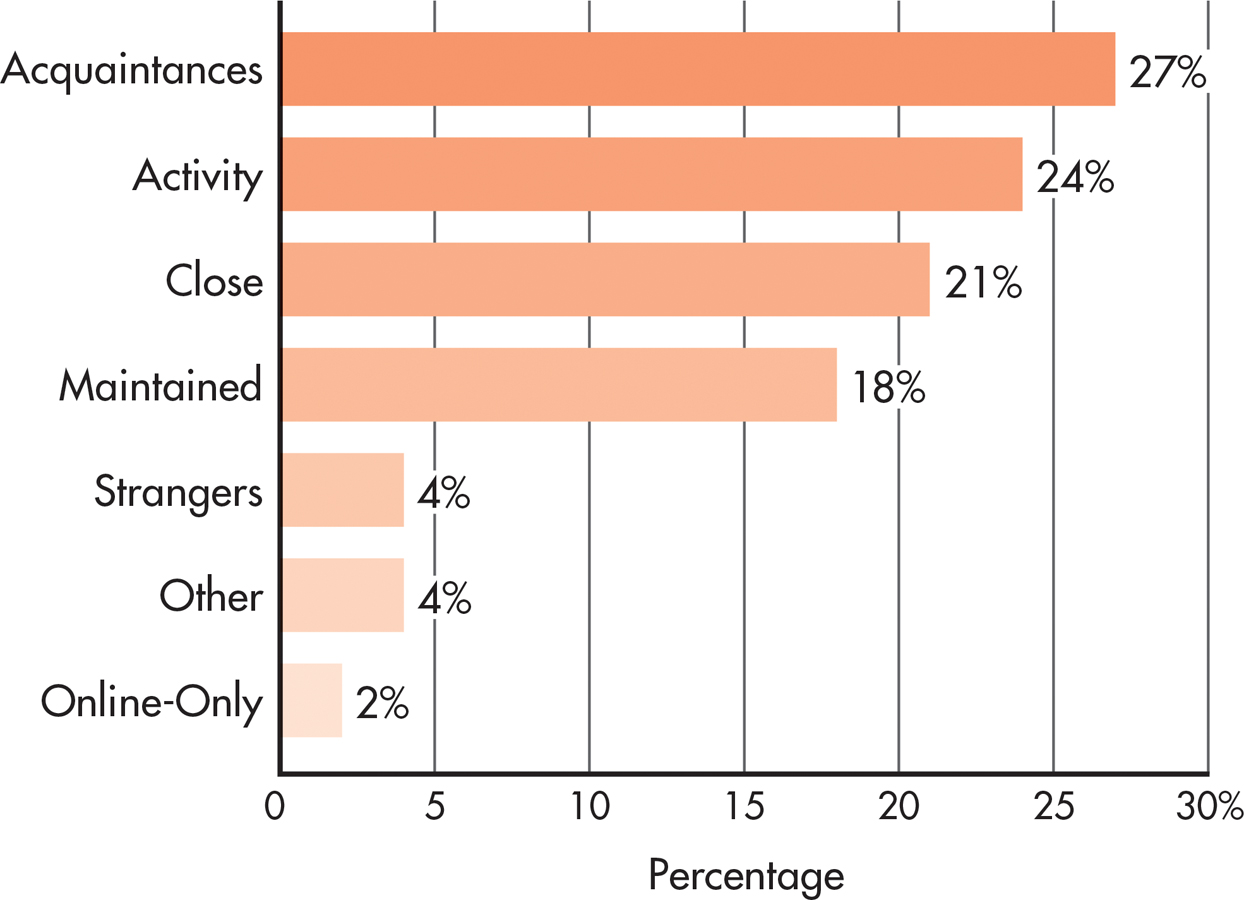
Source: Data from Manago & others (2012).
How was well-being operationally defined? Manago and her colleagues (2012) used a standard scale that measured life satisfaction. Students rated their agreement on a 5-point scale for nine statements like “I have a good life” and “I like the way things are going for me.” And what did Manago and her colleagues find? Students with larger networks were significantly happier with their lives.
STEP 2. DESIGN THE STUDY AND COLLECT THE DATA
This step involves deciding which research method to use for collecting data. There are two basic types of designs used in research—descriptive and experimental. Each research approach answers different kinds of questions and provides different kinds of evidence.
Descriptive research includes research strategies for observing and describing behavior, including identifying the factors that seem to be associated with a particular phenomenon. The study by Adriana Manago and her colleagues (2012) on social networks and student well-being is just one example of descriptive research. Descriptive research answers the who, what, where, and when kinds of questions about behavior. Who engages in a particular behavior? What factors or events seem to be associated with the behavior? Where does the behavior occur? When does the behavior occur? How often? In the next section, we’ll discuss commonly used descriptive methods, including naturalistic observation, surveys, case studies, and correlational studies.
In contrast, experimental research is used to show that one variable causes change in a second variable. In an experiment, the researcher deliberately varies one factor, then measures the changes produced in a second factor. Ideally, all experimental conditions are kept as constant as possible except for the factor that the researcher systematically varies. Then, if changes occur in the second factor, those changes can be attributed to the variations in the first factor.
STEP 3. ANALYZE THE DATA AND DRAW CONCLUSIONS
Once observations have been made and measurements have been collected, the raw data need to be analyzed and summarized. Researchers use the methods of a branch of mathematics known as statistics to analyze, summarize, and draw conclusions about the data they have collected.
statistics
A branch of mathematics used by researchers to organize, summarize, and interpret data.
Researchers rely on statistics to determine whether their results support their hypotheses. They also use statistics to determine whether their findings are statistically significant. If a finding is statistically significant, it means that the results are not very likely to have occurred by chance. As a rule, statistically significant results confirm the hypothesis. Appendix A provides a more detailed discussion of the use of statistics in psychology research.
statistically significant
A mathematical indication that research results are not very likely to have occurred by chance.
Keep in mind that even though a finding is statistically significant, it may not be practically significant. If a study involves a large number of participants, even small differences among groups of subjects may result in a statistically significant finding. But the actual average differences may be so small as to have little practical significance or importance.
For example, Reynol Junco (2012) surveyed nearly two thousand college students and found a statistically significant relationship between GPA and amount of time spent on Facebook: Students who spent a lot of time on Facebook tended to have lower grades than students who spent less time. However, the practical, real-world significance of this relationship was low: It turned out that a student had to spend 93 minutes per day more than the average of 106 minutes for the increased time to have even a small (.12 percentage points) impact on GPA. So remember that a statistically significant result is simply one that is not very likely to have occurred by chance. Whether the finding is significant in the everyday sense of being important is another matter altogether.

A statistical technique called meta-analysis is sometimes used in psychology to analyze the results of many research studies on a specific topic. Meta-analysis involves pooling the results of several studies into a single analysis. By creating one large pool of data to be analyzed, meta-analysis can help reveal overall trends that may not be evident in individual studies.
meta-analysis
A statistical technique that involves combining and analyzing the results of many research studies on a specific topic in order to identify overall trends.
Meta-analysis is especially useful when a particular issue has generated a large number of studies with inconsistent results. For example, many studies have looked at the factors that predict success in college. British psychologists Michelle Richardson and her colleagues (2012) pooled the results of over 200 research studies investigating personal characteristics that were associated with success in college. “Success in college” was operationally defined as cumulative grade-point average (GPA). They found that motivational factors were the strongest predictor of college success, outweighing test scores, high school grades, and socioeconomic status. Especially important was a trait they called performance self-efficacy, the belief that you have the skills and abilities to succeed at academic tasks. We’ll talk more about self-efficacy in Chapter 8, on motivation and emotion.
STEP 4. REPORT THE FINDINGS
For advances to be made in any scientific discipline, researchers must share their findings with other scientists. In addition to reporting their results, psychologists provide a detailed description of the study itself, including who participated in the study, how variables were operationally defined, how data were analyzed, and so forth.
Describing the precise details of the study makes it possible for other investigators to replicate, or repeat, the study. Replication is an important part of the scientific process. When a study is replicated and the same basic results are obtained again, scientific confidence that the results are accurate is increased. Conversely, if the replication of a study fails to produce the same basic findings, confidence in the original findings is reduced.
replicate
To repeat or duplicate a scientific study in order to increase confidence in the validity of the original findings.

Psychologists present their research at academic conferences or write a paper summarizing the study and submit it to one of the many psychology journals for publication. Before accepting papers for publication, most psychology journals send the paper to other knowledgeable psychologists to review and evaluate. If the study conforms to the principles of sound scientific research and contributes to the existing knowledge base, the paper is accepted for publication.
Throughout this text, you’ll see citations that look like the one you encountered in the discussion above on social networks and well-being: “(Manago & others, 2012).” These citations identify the sources of the research and ideas that are being discussed. The citation tells you the author or authors (Manago & others) of the study and the year (2012) in which the study was published. You can find the complete reference in the alphabetized References section at the back of this text. The complete reference lists the authors’ full names, the article title, the journal or book in which the article was published, and the DOI, or digital object identifier. The DOI is a permanent Internet “address” for journal articles and other digital works posted on the Internet.
FIGURE 1.3 shows you how to decipher the different parts of a typical journal reference.
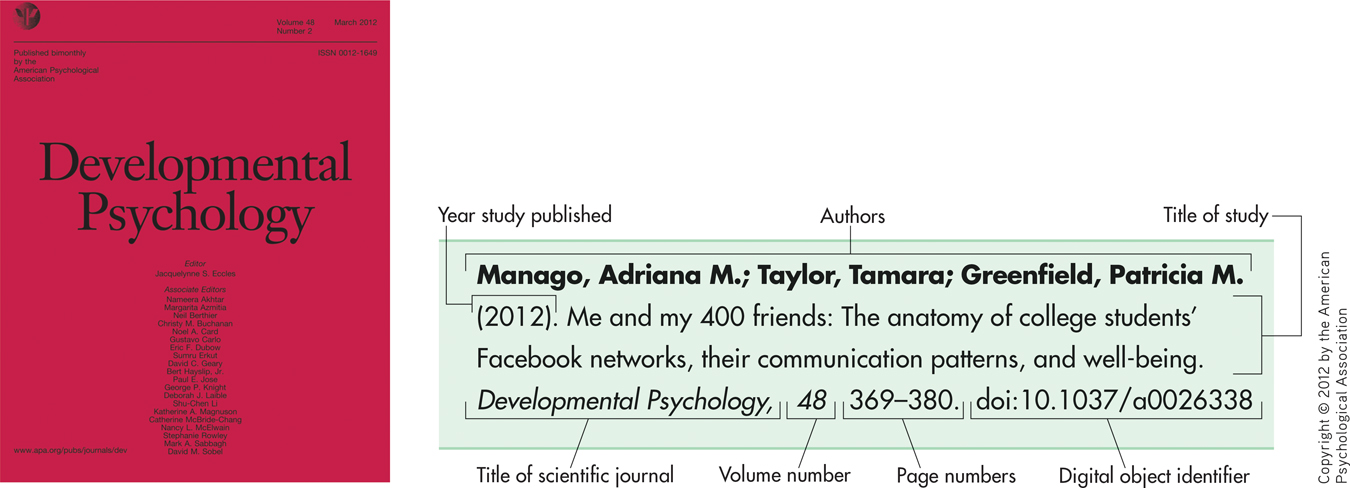
Building Theories: INTEGRATING THE FINDINGS FROM MANY STUDIES
As research findings accumulate from individual studies, eventually theories develop. A theory, or model, is a tentative explanation that tries to account for diverse findings on the same topic. Note that theories are not the same as hypotheses. A hypothesis is a specific question or prediction to be tested. In contrast, a theory integrates and summarizes numerous research findings and observations on a particular topic. Along with explaining existing results, a good theory often generates new predictions and hypotheses that can be tested by further research (Higgins, 2004).
theory
A tentative explanation that tries to integrate and account for the relationship of various findings and observations.
As you encounter different theories, try to remember that theories are tools for explaining behavior and mental processes, not statements of absolute fact. Like any tool, the value of a theory is determined by its usefulness. A useful theory is one that furthers the understanding of behavior, allows testable predictions to be made, and stimulates new research. Often, more than one theory proves to be useful in explaining a particular area of behavior or mental processes, such as the development of personality or the experience of emotion.
It’s also important to remember that theories often reflect the self-correcting nature of the scientific enterprise. In other words, when new research findings challenge established ways of thinking about a phenomenon, theories are expanded, modified, and even replaced. Thus, as the knowledge base of psychology evolves and changes, theories evolve and change to produce more accurate and useful explanations of behavior and mental processes.
While the conclusions of psychology rest on empirical evidence gathered using the scientific method, the same is not true of pseudoscientific claims (J. C. Smith, 2010). As you’ll read in the Science Versus Pseudoscience box below, pseudosciences often claim to be scientific while ignoring the basic rules of science.
SCIENCE VERSUS PSEUDOSCIENCE
What Is a Pseudoscience?
The word pseudo means “fake” or “false.” Thus, a pseudoscience is a fake science. More specifically, a pseudoscience is a theory, method, or practice that promotes claims in ways that appear to be scientific and plausible even though supporting empirical evidence is lacking or nonexistent (Matute & others, 2011). Surveys have found that pseudoscientific beliefs are common among the general public (National Science Board, 2010).
pseudoscience
Fake or false science that makes claims based on little or no scientific evidence.
Do you remember Tyler from our Prologue? He wanted to know whether a magnetic bracelet could help him concentrate or improve his memory. We’ll use what we learned about magnet therapy to help illustrate some of the common strategies used to promote pseudosciences.
Magnet Therapy: What’s the Attraction?
The practice of applying magnets to the body to supposedly treat various conditions and ailments is called magnet therapy. Magnet therapy has been around for centuries. Today, Americans spend an estimated $500 million each year on magnetic bracelets, belts, vests, pillows, and mattresses. Worldwide, the sale of magnetic devices is estimated to be $5 billion per year (Winemiller & others, 2005).
The Internet has been a bonanza for those who market products like magnet therapy. Web sites hail the “scientifically proven healing benefits” of magnet therapy for everything from improving concentration and athletic prowess to relieving stress and curing Alzheimer’s disease and schizophrenia (e.g., Johnston, 2008; Parsons, 2007). Treating pain is the most commonly marketed use of magnet therapy. However, reviews of scientific research on magnet therapy consistently conclude that there is no evidence that magnets can relieve pain (National Standard, 2009: National Center for Complementary and Alternative Medicine, 2009).
But proponents of magnet therapy, like those of other pseudoscientific claims, use very effective strategies to create the illusion of scientifically validated products or procedures. Each of the ploys below should serve as a warning sign that you need to engage your critical and scientific thinking skills.
Strategy 1: Testimonials rather than scientific evidence
Pseudosciences often use testimonials or personal anecdotes as evidence to support their claims. Although they may be sincere and often sound compelling, testimonials are not acceptable scientific evidence. Testimonials lack the basic controls used in scientific research. Many different factors, such as the simple passage of time, could account for a particular individual’s response.

Strategy 2: Scientific jargon without scientific substance
Pseudoscientific claims are littered with scientific jargon to make their claims seem more credible. An ad may be littered with scientific-sounding terms, such as “bio-magnetic balance” that—when examined—turn out to be meaningless.
Strategy 3: Combining established scientific knowledge with unfounded claims
Pseudosciences often mention well-known scientific facts to add credibility to their unsupported claims. For example, the magnet therapy spiel often starts by referring to the properties of the earth’s magnetic field, the fact that blood contains minerals and iron, and so on. Unfortunately, it turns out that the iron in red blood cells is not attracted to magnets (Ritchie & others, 2012). Established scientific procedures may also be mentioned, such as magnetic resonance imaging (MRI). For the record, MRI does not use static magnets, which are the type that are found in magnetic jewelry.
Strategy 4: Irrefutable or nonfalsifiable claims
Consider this claim: “Magnet therapy restores the natural magnetic balance required by the body’s healing process.” How could you test that claim? An irrefutable or nonfalsifiable claim is one that cannot be disproved or tested in any meaningful way. The irrefutable claims of pseudosciences typically take the form of broad or vague statements that are essentially meaningless.
Strategy 5: Confirmation bias
Scientific conclusions are based on converging evidence from multiple studies, not a single study. Pseudosciences ignore this process and instead trumpet the findings of a single study that seems to support their claims. In doing so, they do not mention all the other studies that tested the same thing but yielded results that failed to support the claim. This illustrates confirmation bias—the tendency to seek out evidence that confirms an existing belief while ignoring evidence that contradicts or undermines the belief (J. C. Smith, 2010). When disconfirming evidence is pointed out, it is ignored, rationalized, or dismissed.
confirmation bias
The tendency to seek out evidence that confirms an existing belief while ignoring evidence that might contradict or undermine the belief.
Strategy 6: Shifting the burden of proof
In science, the responsibility for proving the validity of a claim rests with the person making the claim. Many pseudosciences, however, shift the burden of proof to the skeptic. If you express skepticism about a pseudoscientific claim, the pseudoscience advocate will challenge you to disprove their claim.
Strategy 7: Multiple outs
What happens when pseudosciences fail to deliver on their promised benefits? Typically, multiple excuses are offered. Privately, Tyler admitted that he hadn’t noticed any improvement in his ability to concentrate while wearing the bracelet his girlfriend gave him. But his girlfriend insisted that he simply hadn’t worn the bracelet long enough for the magnets to “clear his energy field.” Other reasons given when magnet therapy fails to work:
Magnets act differently on different body parts.
The magnet was placed in the wrong spot.
The magnets were the wrong type, size, shape, etc.
One of our goals in this text is to help you develop your scientific thinking skills so you’re better able to evaluate claims about behavior or mental processes, especially claims that seem farfetched or too good to be true. In this chapter, we’ll look at the scientific methods used to test hypotheses and claims. And in the Science Versus Pseudoscience boxes in later chapters, you’ll see how various pseudoscience claims have stood up to scientific scrutiny. We hope you enjoy this feature!
1.4 Descriptive Research
KEY THEME
Descriptive research is used to systematically observe and describe behavior.
KEY QUESTIONS
What are naturalistic observation and case study research, and why and how are they conducted?
What is a survey, and why is random selection important in survey research?
What are the advantages and disadvantages of each descriptive method?
Descriptive research designs include strategies for observing and describing behavior. Using descriptive research designs, researchers can answer important questions, such as when certain behaviors take place, how often they occur, and whether they are related to other factors, such as a person’s age, ethnic group, or educational level. As you’ll see in this section, descriptive research can provide a wealth of information about behavior, especially behaviors that would be difficult or impossible to study experimentally.
descriptive research
Scientific procedures that involve systematically observing behavior in order to describe the relationship among behaviors and events.
Naturalistic Observation: THE SCIENCE OF PEOPLE− AND ANIMAL-WATCHING
When psychologists systematically observe and record behaviors as they occur in their natural settings, they are using the descriptive method called naturalistic observation. Usually, researchers engaged in naturalistic observation try to avoid being detected by their subjects, whether people or nonhuman animals. The basic goal of naturalistic observation is to detect the behavior patterns that exist naturally—patterns that might not be apparent in a laboratory or if the subjects knew they were being watched.
naturalistic observation
The systematic observation and recording of behaviors as they occur in their natural setting.
!launch!
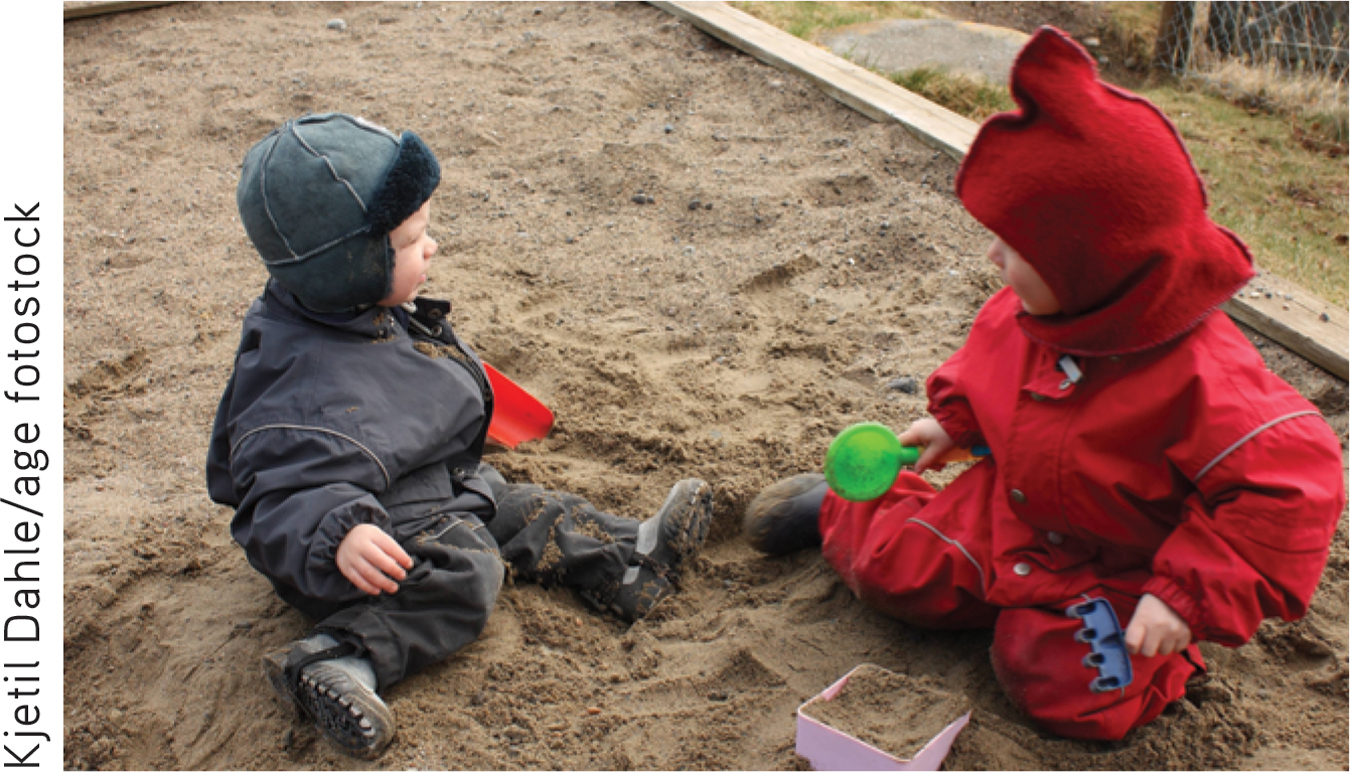
As you might expect, psychologists very carefully define the behaviors that they will observe and measure before they begin their research. Often, to increase the accuracy of the observations, two or more observers are used. In some studies, observations are recorded so that the researchers can carefully analyze the details of the behaviors being studied.
One advantage of naturalistic observation is that it allows researchers to study human behaviors that cannot ethically be manipulated in an experiment. For example, suppose that a psychologist wants to study bullying behavior in children. It would not be ethical to deliberately create a situation in which one child is aggressively bullied by another child. However, it would be ethical to study bullying by observing aggressive behavior in children on a crowded school playground (Drabick & Baugh, 2010).
As a research tool, naturalistic observation can be used wherever patterns of behavior can be openly observed—from the rain forests of the Amazon to restaurants, city streets, and classrooms. Because the observations occur in the natural setting, the results of naturalistic observation studies can often be generalized more confidently to real-life situations than can the results of studies using artificially manipulated or staged situations.

(Left:) In 1980, a single humpback whale was first seen whacking the water with his tail, a foraging technique called “lobtail feeding.” Researchers used naturalistic observation to track the spread of this feeding technique throughout a humpback whale population (Allen & others, 2013; de Waal, 2013).
(Right:) After media reports of aggressive behavior by adult spectators at Canadian youth hockey games, psychologist Anne Bowker and five observers (2009) systematically recorded the comments of adult spectators at youth hockey games. They found that two-thirds of the comments were directed at the players rather than the officials, and that most comments were positive and encouraging rather than critical.
Bruce Bennett/Getty Images
Case Studies: DETAILS, DETAILS, DETAILS
A case study is an intensive, in-depth investigation of an individual, a family, or some other social unit. Case studies involve compiling a great deal of information from numerous sources to construct a detailed picture of the person. The individual may be extensively interviewed, and his or her friends, family, and co-workers may be interviewed as well. Psychological and biographical records, neurological and medical records, and even school or work records may be examined. Other sources of information can include psychological testing and observations of the person’s behavior. Clinical psychologists and other mental health specialists routinely use case studies to develop a complete profile of a psychotherapy client.
case study
An intensive study of a single individual or small group of individuals.
Case studies are also used in psychological research investigating rare, unusual, or extreme conditions. These kinds of case studies often provide psychologists with information that can be used to help understand normal behavior. For example, the Chapter 3 Prologue features the story of Mike May, who partially regained his sight after being blind since early childhood. You’ll read how the information gained from extensive testing of Mike’s brain and visual abilities has provided insights into brain and visual development in normally sighted individuals.
While case studies can provide invaluable information, they also have limitations. The most important limitation is that the findings on people with rare or unusual conditions might not apply to people in the broader population.
Surveys: (A) ALWAYS (B) SOMETIMES (C) NEVER (D) HUH?
How much time do you spend studying and preparing for class? Is it more, less, or about the same amount of time as other students at your college? Do students in some majors study more than students in other majors?
How could you find out the answers to such questions? A direct way to find out about the behavior, attitudes, and opinions of people is simply to ask them. In a survey, people respond to a structured set of questions about their experiences, beliefs, behaviors, or attitudes. One key advantage offered by survey research is that information can be gathered from a much larger group of people than is possible with other research methods.
survey
A questionnaire or interview designed to investigate the opinions, behaviors, or characteristics of a particular group.
Typically, surveys involve carefully constructed questionnaires. Questionnaires may be paper, Internet-based, computer-based, or administered in person or over the telephone by a trained interviewer.
Surveys are seldom administered to everyone within the particular group or population under investigation. Instead, researchers usually select a sample—a segment of the group or population. Selecting a sample that is representative of the larger group is the key to getting accurate survey results. A representative sample very closely parallels, or matches, the larger group on relevant characteristics, such as age, sex, race, marital status, and educational level.
sample
A selected segment of the population used to represent the group that is being studied.
representative sample
A selected segment that very closely parallels the larger population being studied on relevant characteristics.
How do researchers select the participants so that they end up with a sample that is representative of the larger group? The most common strategy is to randomly select the sample participants. Random selection means that every member of the larger group has an equal chance of being selected for inclusion in the sample. To illustrate, let’s look at the National Survey of Student Engagement, a survey of almost 300,000 U.S. college students and 22,000 Canadian college students. The NSSE surveys college freshmen and seniors about the nature and quality of their educational experience. TABLE 1.2 shows how the randomly selected sample surveyed in the NSSE compares to the broader population of U.S. undergraduates enrolled in four-year institutions.
Comparing a Sample to the Larger Population
| U.S. 4-Year-College Population | NSSE Sample | |
|---|---|---|
| Enrollment Status | ||
| Full-time | 84% | 89% |
| Part-time | 16% | 14% |
| Gender | ||
| Female | 56% | 55% |
| Male | 44% | 45% |
| Race/Ethnicity | ||
| African American/Black | 13% | 13% |
| American Indian/Alaska native | 1% | 1% |
| Asian/Asian American/Pacific Islander | 6% | 5% |
| Caucasian/White | 63% | 65% |
| Hispanic | 12% | 10% |
| Other | n/a | 1% |
| Multiracial/Multiethnic | 3% | 3% |
| International | 3% | 2% |
| Source: Data from NSSE, 2012. | ||
How closely did the NSSE sample match important characteristics of U.S. undergraduates enrolled at four-year institutions as a whole? You can see for yourself by comparing the two columns in this table. Clearly, the random selection process used in the NSSE resulted in a sample that very closely approximated the characteristics of the larger population.
random selection
Process in which subjects are selected randomly from a larger group such that every group member has an equal chance of being included in the study.
What did the NSSE find? Among other findings, they discovered that first-year female students studied more than male students, and online students more than on-campus students. Engineering majors spent the most time preparing for class, while business majors spent the least. The researchers also surveyed faculty about their perceptions of student study habits. Interestingly, students studied less than instructors expected but more than their instructors believed that they did.
One potential problem with surveys and questionnaires is that people do not always answer honestly, especially when they are asked questions about sexual activity, drug or alcohol use, or illegal activities. The tendency to respond in socially desirable ways can be addressed in a carefully designed survey. One strategy is to rephrase the question and ask for the same information in a different way at different points during the survey. Researchers can then compare the responses to make sure that the participant is responding honestly and consistently. There is some evidence that participants are more likely to respond honestly to Internet or computer-administered surveys than surveys that are administered in person (Dennis & Li, 2007).
Correlational Studies: LOOKING AT RELATIONSHIPS AND MAKING PREDICTIONS: CAN EATING CURLY FRIES MAKE YOU SMARTER?
KEY THEME
Correlational studies show how strongly two factors are related.
KEY QUESTIONS
What is a correlation coefficient?
What is the difference between a positive correlation and a negative correlation?
Why can’t correlational studies be used to demonstrate cause-and-effect relationships?
Along with answering the who, what, where, and when questions, the data gathered by descriptive research techniques can be analyzed to show how various factors are related. A correlational study examines how strongly two variables are related to, or associated with, each other. Correlations can be used to analyze the data gathered by any type of descriptive method, and are also used to analyze the results of experiments.
correlational study
A research strategy that allows the precise calculation of how strongly related two factors are to each other.
To illustrate, let’s look at a correlational study conducted by psychologists Marissa K. Hartwig and John Dunlosky (2012). Hartwig and Dunlosky were interested in identifying the study habits most strongly linked to academic success. They surveyed 324 college students at a large state university. They used self-reported GPA as the operational definition of academic achievement. FIGURE 1.4 shows some of the survey results. Once the data were collected, Hartwig and Dunlosky used a statistical procedure to calculate a figure called a correlation coefficient.
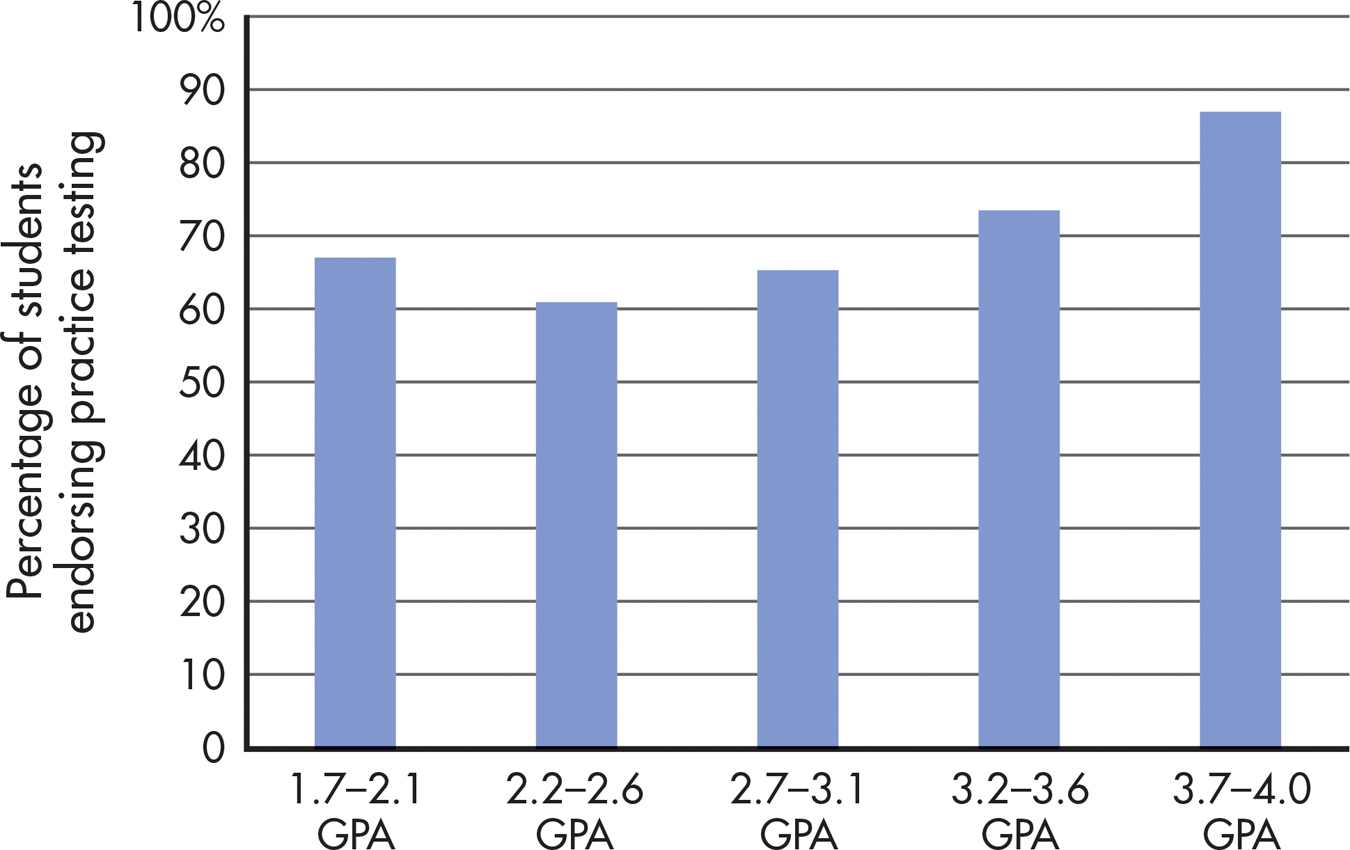
Source: Data from Hartwig & Dunlosky, 2012.

A correlation coefficient is a numerical indicator of the strength of the relationship between two factors. A correlation coefficient always falls in the range from −1.00 to +1.00. The correlation coefficient has two parts—the number and the sign. The number indicates the strength of the relationship, and the sign indicates the direction of the relationship between the two variables.
correlation coefficient
A numerical indication of the magnitude and direction of the relationship (the correlation) between two variables.
More specifically, the closer a correlation coefficient is to 1.00, whether it is positive or negative, the stronger the correlation or association is between the two factors. Hence, a correlation coefficient of +.90 or −.90 represents a very strong association, meaning that the two factors almost always occur together. A correlation coefficient of +.10 or −.10 represents a very weak correlation, meaning that the two factors seldom occur together. (Correlation coefficients are discussed in greater detail in Appendix A, on Statistics, at the back of this book.)
Notice that correlation coefficients do not function like the algebraic number line. A correlation of −.80 represents a stronger relationship than does a correlation of +.10. The plus or minus sign in a correlation coefficient simply tells you the direction of the relationship between the two variables.
A positive correlation is one in which the two factors vary in the same direction. That is, the two factors increase or decrease together. For example, Hartwig and Dunlosky (2012) found that there was a strong positive correlation between GPA and use of self-testing as a study strategy. That is, as the use of self-testing increased, so did GPA. Other study strategies, such as using flashcards, rereading, or highlighting, were not associated with an increase in GPA. Wondering why not? Stay tuned—we’ll discuss that very question in the Psych for Your Life section at the end of the chapter.
positive correlation
A finding that two factors vary systematically in the same direction, increasing or decreasing together.
In contrast, a negative correlation is one in which the two variables move in opposite directions: As one factor decreases, the other increases. In a study investigating the relationship between multi-tasking and GPA, Reynol Junco and Shelia Cotten (2012) found that there was a negative correlation between time spent sending text messages while studying and GPA: As time spent texting while studying increased, GPA decreased.
negative correlation
A finding that two factors vary systematically in opposite directions, one increasing as the other decreases.
What can we conclude about the relationship between academic achievement and sending texts while studying? Or GPA and self-testing? Does the evidence allow us to conclude that texting while studying causes a decrease in grade-point average? Or that using self-testing as a study strategy causes people to achieve higher GPAs?
Not necessarily. Consider the negative correlation between GPA and time spent texting while studying. It could be that a third variable was responsible for the associations between texting and GPA. Perhaps students who send texts while studying do so because they lack academic motivation, or are uninterested in the subject matter. In other words, it might be that a lack of academic motivation or interest, rather than sending texts, was actually responsible for the lower grades.
Similarly, consider the positive correlation between self-testing and GPA. We cannot conclude that using self-tests in itself causes an increase in GPA. It’s entirely possible that people who are more academically motivated are also more likely to actively test their mastery of class material, which after all takes more effort than simply rereading or highlighting material in a textbook. Thus, it could be that highly motivated students are more likely to use self-testing as a study strategy than students who are less motivated.
Here is the critical point: Even if two factors are very strongly correlated, correlation does not necessarily indicate causality. A correlation tells you only that two factors seem to be related or that they co-vary in a systematic way. Although two factors may be very strongly correlated, correlational studies cannot be used to demonstrate a true cause-and-effect relationship. As you’ll see in the next section, the experimental method is the only scientific strategy that can provide compelling evidence of a cause-and-effect relationship between two variables.
CONCEPT REVIEW 1.3
Descriptive Research
Fill in each blank with one of these terms: naturalistic observation, case studies, correlational research, positive correlation, negative correlation.
Question 1.12
| 1. | A psychologist discovers that as negative life events increase, episodes of depression also increase. The psychologist concludes that there is a BdRx0HYxeOmMn4yp/3NnIJEnfVI95nD7 between negative life events and episodes of depression. |
Question 1.13
| 2. | A psychologist is interested in what hospital staff members say about their patients in public. His research assistants spend four hours riding elevators in various hospitals and unobtrusively recording the public conversations. This psychologist is using pBL+62snH9FvlCTb2EI2Mmnc3kL9+fSs7HMqOQ== . |
Question 1.14
| 3. | A psychologist is using police reports and weather reports to determine whether there is any relationship between the frequency of arrests for aggressive behavior and the temperature. She is using RMGjygBPMq4RnfgrmqV3QcvBUkLKzuj0lPVZFg== to study this relationship. |
Question 1.15
| 4. | Researchers have found that the more credit cards people have, the less money they tend to have in their savings accounts. These researchers have discovered a Ps4hhRfq6wRJFgaPJVdw4uXowpKob8Jz between the number of credit cards and the amount of savings. |
Question 1.16
| 5. | Dr. Romano conducts an in-depth interview and gives extensive psychological tests to an individual who claims to have been abducted by aliens. Dr. Romano is using nMSJkUq52TxPVQq9vLF6uQ== in this investigation. |
Test your understanding of The Scientific Method and Descriptive Research Methods with
 .
.
1.5 Experimental Research
KEY THEME
The experimental method is used to demonstrate a cause-and-effect relationship between two variables.
KEY QUESTIONS
What roles do the independent variable and dependent variable play in an experiment?
What is the testing effect?
How can experimental controls help minimize the effects of confounding variables?
In this chapter, we’ve noted a number of factors that are associated with higher or lower college grades. But all of these factors—such as time spent sending texts and on Facebook—are correlational, meaning that while they are linked, they do not necessarily indicate that the two factors are causally related.
In contrast to descriptive research and correlational studies, experimental research is used to demonstrate a cause-and-effect relationship between changes in one variable and the effect that is produced on another variable. Conducting an experiment involves deliberately varying one factor, which is called the independent variable. The researcher then measures the changes, if any, that are produced in a second factor, called the dependent variable. The dependent variable is so named because changes in it “depend on” variations in the independent variable.
experimental research
A method of investigation used to demonstrate cause-and-effect relationships by purposely manipulating one factor thought to produce change in another factor.
independent variable
The purposely manipulated factor thought to produce change in an experiment; also called the treatment variable.
dependent variable
The factor that is observed and measured for change in an experiment, thought to be influenced by the independent variable; also called the outcome variable.
To the greatest degree possible, all other conditions in the experiment are kept exactly the same for all participants. Thus, when the data are analyzed, any changes that are measured in the dependent variable can be attributed to the deliberate manipulation of the independent variable. In this way, an experiment can provide evidence of a cause-and-effect relationship between the independent and dependent variables.
In designing experiments, psychologists try to anticipate and control for confounding variables. Also called extraneous variables, these factors are not the focus of the experiment. However, confounding variables might produce inaccurate experimental results by influencing changes in the dependent variable. Confounding variables in a psychology experiment could include unwanted variability in such factors as the participants’ ages, gender, ethnic background, race, health, occupation, personal habits, education, and so on.
confounding variable
A factor or variable other than the ones being studied that, if not controlled, could affect the outcome of an experiment; also called an extraneous variable.
To illustrate how experimental research works, let’s look at a topic of interest to most college students: What types of study strategies are most effective?
In most educational settings, learning is thought to take place during study, instruction, and practice. Tests, in contrast, are neutral experiences and simply assess what has been learned. But some studies seemed to suggest that being tested on new information helped students learn and remember it better than simply studying it (see Roediger & Butler, 2011). Psychologists Henry Roediger and Jeffrey Karpicke (2006) set out to investigate the effects of testing on learning and memory.
Experimental Design: STUDYING THE EFFECTS OF TESTING
How could you design an experiment that could show a difference between learning due to studying and learning due to testing? Roediger and Karpicke (2006) designed an experiment that compared the effects of repeated tests with the effects of repeated study periods. They predicted that students who repeatedly took tests after studying would have better long-term memory of the new information than students who repeatedly studied, but were not tested on, the same material. The hypothesis, then, was that “repeated testing improves learning more than repeated studying.”
The participants were 60 college undergraduates, aged 18 to 24. The researchers used random assignment to assign participants to one of two groups: the experimental or the control group. Random assignment means that all the participants have an equal chance of being assigned to any of the experimental groups or conditions. Random assignment helps ensure that any potential differences among the participants are spread out evenly across all experimental conditions. Random assignment also helps minimize the possibility of bias because the same criteria are used to assign all participants to the different experimental groups.
random assignment
The process of assigning participants to experimental conditions so that all participants have an equal chance of being assigned to any of the conditions or groups in the study.
In any well-designed experiment, there is at least one control group. The control group serves as a baseline against which changes in the experimental group can be compared. In a typical experiment, the participants assigned to the control group go through all the experimental phases but are not exposed to the independent variable. Only the participants in the experimental group are exposed to the independent variable. In this study, the independent variable was repeated testing. The dependent variable was the score earned on a final test.
control group or control condition
In an experiment, the group of participants who are exposed to all experimental conditions, except the independent variable; the group against which changes in the experimental group are compared.
experimental group or experimental condition
In an experiment, the group of participants who are exposed to all experimental conditions, including the independent variable.
Here’s how the experiment was conducted. All of the participants were given a short prose passage to study. Participants in the control group read the passage for five minutes, and took a two-minute break. They then studied the passage again for five minutes before taking another two-minute break. They repeated this process for a total of four consecutive study periods. Note that this is the standard test-preparation method: to repeatedly study the same material until you felt certain that you had mastered it.
Participants in the experimental group were given the same prose passage to learn. They were also allotted five minutes to study the passage, and then took a two-minute break. But rather than restudying the passage, they took a test on the material: They were given a blank sheet of paper and were allowed ten minutes to write down as much information from the prose passage as they could remember. After another two-minute break, without studying the material again, they were given the same test, followed by a two-minute break. This procedure was followed for a total of one study period and three test periods. FIGURE 1.5 shows the setup of the experiment.
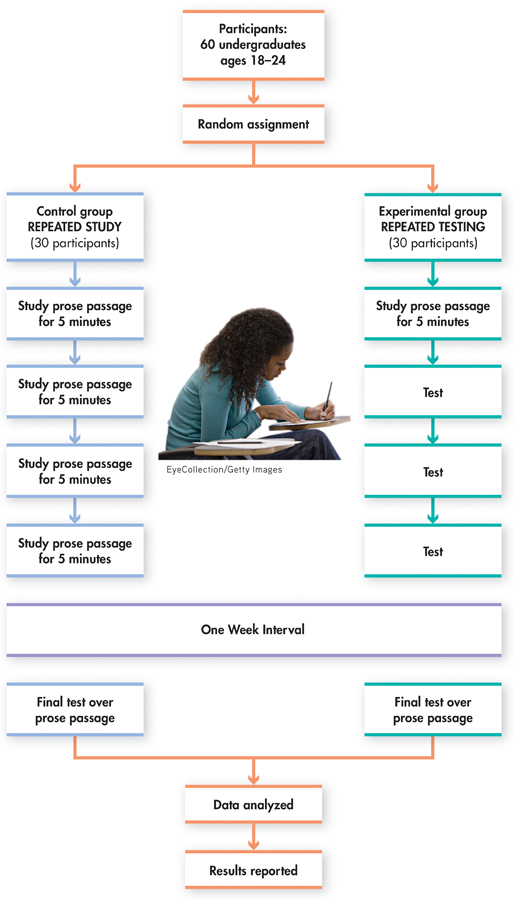
MYTH !rhtriangle! SCIENCE
Is it true that reading something over and over again is not the most effective way to prepare for a test?
At the end of the session, all of the participants filled out a short questionnaire asking them to predict how well they would remember the material in a week. A week later, all participants were tested on the material.
How do you think the two groups would compare on a test of their retention of the material a week later? Conventional wisdom would suggest that the control group members, who studied the material in four periods for a total of twenty minutes, would have learned the material much better than the participants in the experimental group, who, after all, had only studied the material for a total of five minutes.
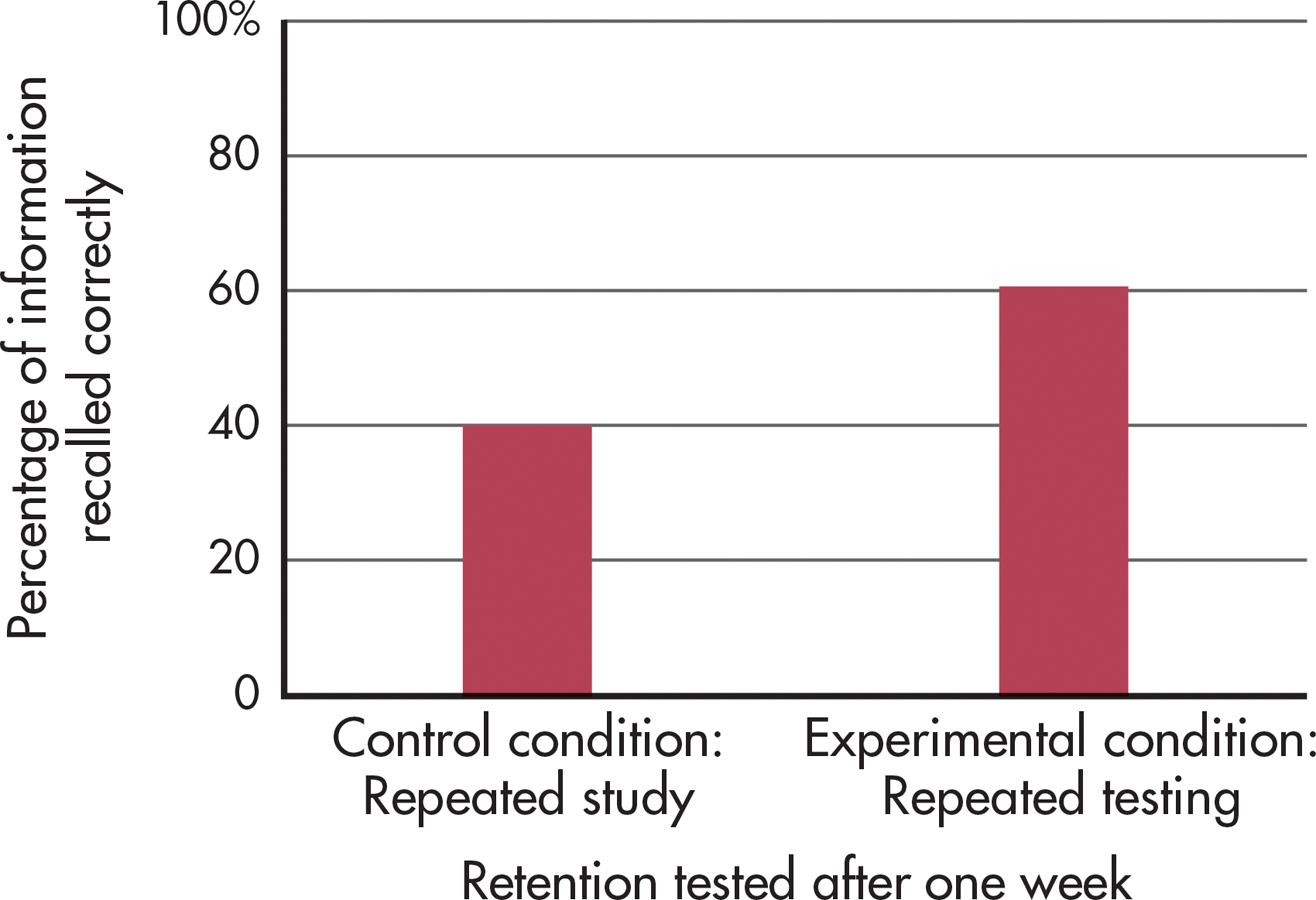
Source: Data from Roediger & Karpicke, 2006.
FIGURE 1.6 shows the results on the test one week later. Despite having studied the material only one-fourth as long as the control group, the experimental group trounced the control group: They remembered 61% of the material in the passage while the control group remembered only 40%. Interestingly, the control group participants were much more confident of their ability to remember the information than the experimental group.
Were you surprised by the results? In fact, the basic results have been replicated by many different researchers (see Bjork & others, 2013; Roediger & Butler, 2011). Multiple studies have supported what has been dubbed the testing effect: the finding that practicing retrieval of information from memory produces better retention than restudying the same information for an equivalent amount of time. In other words, testing—rather than simply being a neutral assessment of what has been learned—is a powerful learning tool in its own right (Carpenter, 2012).
testing effect
The finding that practicing retrieval of information from memory produces better retention than restudying the same information for an equivalent amount of time.
We’ll discuss some of the reasons for the testing effect in Chapter 6, Memory. In Psych for Your Life at the end of this chapter, we’ll describe some of the other ways in which the testing effect has been explored. And, we’ll discuss additional ways in which you can use psychological research to improve your own memory for new information.
Experimental Controls

Some experiments involve extra controls to increase the reliability of their findings. One important safeguard is the double-blind technique, which is often used when researchers are testing the effectiveness of a procedure or drug treatment. In a double-blind study, both the participants and the researchers interacting with them are blind, or unaware of the treatment or condition to which the participants have been assigned.
double-blind technique
An experimental control in which neither the participants nor the researchers interacting with the participants are aware of the group or condition to which the participants have been assigned.
Using a double-blind technique helps guard against the possibility that the researcher inadvertently becomes an extraneous or confounding variable in the study. This can happen when a researcher, without realizing it, displays demand characteristics. These are subtle cues or signals that can bias the outcome of the study by communicating the behavior or response that is expected of the participants. A behavior as subtle as the researcher slightly smiling or frowning when dealing with some participants, but not others, could bias the outcome of a study.
demand characteristics
In a research study, subtle cues or signals expressed by the researcher that communicate the kind of response or behavior that is expected from the participant.
Such studies also often involve the use of a placebo, which is a so-called “sugar pill” or other inactive substance or procedure. Although it is inactive, a placebo can produce real effects. A placebo effect is any change that can be attributed to beliefs and expectations rather than an actual drug, treatment, or procedure.
placebo
A fake substance, treatment, or procedure that has no known direct effects.
placebo effect
Any change attributed to a person’s beliefs and expectations rather than an actual drug, treatment, or procedure.
For example, one student in our class asked us whether we believed that the herb ginkgo biloba could improve memory. To test that notion, psychologist Paul Solomon and his colleagues (2002) used a placebo in a double-blind study to test whether ginkgo biloba improved memory and concentration in older adults. Participants in the experimental group took the manufacturer’s recommended daily dosage of ginkgo biloba for six weeks, while those in the control group took an identical dosage of placebo capsules.
The researchers who interacted with the participants did not know which participants received the real or fake ginkgo biloba. The researchers who did know the group assignments did not interact with or evaluate the participants. Memory and other cognitive abilities were assessed at the beginning and end of the six-week study.
Can you predict the results of the ginkgo biloba experiment? At the end of the six-week study, the test scores of both groups rose. However, there were no significant differences between the improvement in the ginkgo biloba and placebo groups. So why did both groups improve? The researchers concluded that it was probably due to the practice effect. The participants’ experience with the tests—the practice they got by simply taking the mental ability tests twice—was the most likely reason that test scores improved in both groups. This experiment illustrates the importance of the control group: Without a control group to compare, the improvement in the experimental group might have been attributed to the drug. But since the control group participants also improved, there must have been another explanation.
Limitations of Experiments and Variations in Experimental Design
A well-designed and carefully executed experiment can provide convincing evidence of a cause-and-effect relationship between the independent and dependent variables. But experiments do have limitations. Because experiments are often conducted in highly controlled laboratory situations, they are sometimes criticized for having little to do with actual behavior. That is, the results may not generalize well, meaning that the results cannot be applied to real-world situations or to more general populations beyond the participants in the study. To minimize this, experiments are sometimes carried out in natural settings, rather than in a laboratory. A second potential limitation is that the phenomena the researchers want to study may be impossible or unethical to control experimentally.
But researchers are sometimes able to take advantage of naturally occurring events or conditions. In a natural experiment, researchers carefully observe and measure the impact of a naturally occurring event or condition on their study participants (Rutter, 2008). Although not true experiments, psychologists can use natural experiments to study the effects of disasters, epidemics, or other events.
natural experiment
A study investigating the effects of a naturally occurring event on the research participants.
Sometimes natural experiments involve everyday settings. Psychologists Kandice Kapinos and Olga Yakusheva (2011) were interested in better understanding the relationship between environmental factors and weight gain. Previous research had shown that environmental factors, such as high concentrations of fast-food restaurants, are correlated with the average weight of nearby residents (Inagami & others, 2009). However, since the research was correlational, it wasn’t possible to conclude that proximity of fast-food restaurants caused weight gain. It could be that people with unhealthy eating habits were more likely to choose to live in neighborhoods with easy access to fast food.
Of course, researchers can’t randomly assign large numbers of participants to long-term living situations. But Kapinos and Yakusheva identified a naturally occurring situation in which people are randomly assigned to housing—college dormitories.
College freshmen do tend to gain weight during their first year away from home—the so-called “freshman fifteen”—although the weight gain is typically closer to five pounds (Holm-Denoma & others, 2008). Kapinos and Yakusheva took advantage of the naturally occurring conditions on their own college campus by comparing weight changes in freshmen who lived in dorms with on-site cafeterias and snack bars with weight changes in freshman who lived in dorms that did not have on-site food services. Since freshmen were randomly assigned to the dormitories, the researchers could safely assume that there wasn’t some other factor that might cause differences between the two groups.
Think Like a SCIENTIST
Could you have been part of an experiment without realizing it? Go to LaunchPad: Resources to Think Like a Scientist about Contagious Online Emotions.

What did Kapinos and Yakusheva (2011) find? Female students who were assigned to dormitories with on-site dining facilities gained more weight and exercised less than students who were assigned to dormitories without food services. Male students assigned to dormitories with food service reported eating more meals and more snacks, but did not report gaining weight. Kapinos and Yakusheva (2011) concluded that campus design did play a significant role in influencing healthy—and unhealthy—behaviors in college students.

Before leaving the topic of research methods, one contemporary trend deserves special mention: the increasing use of brain-imaging techniques in virtually every area of psychology. To help highlight the importance of neuroscience, every chapter includes a special “Focus on Neuroscience” feature. This chapter’s Focus on Neuroscience explores brain-imaging techniques and discusses their increasing use in psychological research (see pp. 32–
This brief introduction to research methods will give you some idea of how psychologists conduct research. But we hope it also illustrates some of the ways in which scientists—and others—evaluate claims and evidence. In the Critical Thinking box “Think Like a Scientist,” we offer several suggestions to help you evaluate claims that you encounter both inside and outside the classroom.
CONCEPT REVIEW 1.4
Experimental Research
Match each component of the testing effect and ginkgo biloba experiments to the correct term. Some terms may be used more than once. Choose from the following:
independent variable
random assignment
control group
confounding variable
dependent variable
placebo
double-blind technique
Question 1.17
| 1. | OKhZIEdstdI= The fact that, in both experiments, all participants had an equal chance of being assigned to either the control group or the experimental group. |
Question 1.18
| 2. | 07l26oM3rbI= Fake capsules that were identical in appearance to the actual ginkgo biloba capsules. |
Question 1.19
| 3. | YRgugYtI25Q= The fact that neither the participants nor the researchers who interacted with the participants knew which participants had interacted with the real ginkgo biloba and which participants had received the fake ginkgo biloba. |
Question 1.20
| 4. | 7hl/FE1viUM= Being repeatedly tested on the prose passage in the testing effect experiment. |
Question 1.21
| 5. | cWyC141FZ6k= Scores on the final test given a week after the participants finished the active part of the testing effect experiment. |
Question 1.22
| 6. | 7hl/FE1viUM= Taking ginkgo biloba capsules. |
Question 1.23
| 7. | jD5ri8TR+P8= Participants who repeatedly studied the prose passage in the testing effect experiment. |
Question 1.24
| 8. | cWyC141FZ6k= In the ginkgo biloba experiment, scores on the final test of memory and cognitive abilities. |
Question 1.25
| 9. | gegAUvAzZlg= In the testing effect experiment, if one participant had already been familiar with the information used in the prose passage that all of the participants studied and were subsequently tested on. |
Question 1.26
| 10. | jD5ri8TR+P8= Participants who took the fake ginkgo biloba capsules. |
CRITICAL THINKING
How to Think Like a Scientist
Do violent video games make people aggressive? Are some people “right-brained” and others “left-brained”? What’s the best way to lose weight? Do government-sponsored programs like Head Start provide long-term benefits to disadvantaged children?
How can you evaluate the claims you encounter? Both in class and out, it’s important to engage in critical thinking, actively questioning statements rather than blindly accepting them.
critical thinking
The active process of minimizing preconceptions and biases while evaluating evidence, determining the conclusions that can reasonably be drawn from evidence, and considering alternative explanations for research findings or other phenomena.
Critical thinkers are open to new information, ideas, and claims. However, this open-mindedness is tempered by a healthy sense of skepticism (J. C. Smith, 2010). The critical thinker consistently asks, “What evidence supports this claim?”
In this chapter, we’ve detailed the ways that psychologists conduct research, including the different ways they test hypotheses. You can think of the claims you encounter in print or in online media, on TV shows, or in conversation as hypotheses, too. In other words, when you encounter an idea or statement that is presented as factual, try to think like a scientist.
Like a scientist, you can follow these four steps to determine the validity of a particular claim:
1. Identify the Claim
Some claims are so vague that they are impossible to be tested scientifically. For example, take the statement that “you use only 10% of your brain.” Superficially, it sounds convincing, but can you imagine an experiment that would actually test this claim? Try to restate the claim in terms of a hypothesis that could be supported or disproved by empirical evidence. How would you define the variables that could be objectively measured?
2. Evaluate the Evidence
As you have learned, the scientific method includes key safeguards in experimental design, such as random assignment, the presence of a control group, and researchers who are “blind” to participants’ conditions. So when evidence is offered in support of a particular position, scrutinize it and look for those basic safeguards.
MYTH !lhtriangle! SCIENCE
Is it true that when two behaviors are “linked,” “related,” or tend to occur together it’s safe to assume that one behavior caused the other?
Consider also the nature of the evidence that may be offered. When words like link,” “tie,” or “association” are used, the evidence is probably correlational, rather than experimental. But remember the distinction between correlation and causation. As you have learned, just because two events are correlated does not mean that they are causally linked. For example, consider a recent study that found a positive correlation between the number of outdoor signs and billboards advertising food and non-alcoholic beverages and the rate of obesity in particular urban neighborhoods (Lesser & others, 2013). As the number of outdoor food ads increased, so did the obesity rate. One Internet headline read, “Billboards Make You Fat!” Some commentators advised that policy makers consider restricting outdoor food advertising as a way of reducing obesity in urban areas.
But is such a conclusion justified? No. You cannot conclude that the correlation found between obesity and advertisements occurred because the higher prevalence of advertising caused higher rates of obesity. The evidence does not support that conclusion. In fact, it could just as likely be that advertisers are more likely to place ads for food in areas where they believe there are higher numbers of obese people (Chabris & Simons, 2013).
Similarly, remember that testimonials are not evidence (Coltheart & MacArthur, 2012). Distinguish between empirical evidence that can be objectively observed, measured, and shared – and private opinions, based on feelings or personal experience. For example, the fact that a relative’s child had a terrible experience in day care is not evidence that day care is generally bad for all children.
3. Consider Alternative Explanations
Especially if a claim is highly unusual, seems to contradict accepted scientific theories, or has no plausible explanation, consider alternative explanations. A claim demonstrating improvement in a condition or skill could, in fact, have many different explanations. For example, suppose a friend’s cold disappeared after he took a special herbal supplement recommended by another friend. The improvement could be due to the herbs. But it could also be due to the placebo effect (pp. 28–
4. Consider the Source of the Research or Claim
Typically, scientific research is reported in a peer-reviewed scientific journal or at an academic conference before the results are released to the media. So, when research is reported in the popular media or on the Internet, consider the source of the research. While publication in a scientific journal is no guarantee that the results will prove valid over time, you can at least be certain that the research has been carefully evaluated by other scientists in the field. When a claim has no apparent ties to legitimate educational or scientific enterprises, you should be especially cautious. In general, it’s worth considering the researchers’ motives. If the people or company making the claim have the potential to profit from its use, the source may not be objective.
Whether the claims you encounter come from friends, instructors, or pundits, remember these four steps—and think like a scientist before blindly accepting them.
CRITICAL THINKING QUESTIONS
Why might other people want to discourage you from thinking critically?
In what situations is it probably most difficult or challenging for you to exercise critical thinking skills? Why?
What can you do or say to encourage others to use critical thinking in evaluating questionable claims or assertions?
FOCUS ON NEUROSCIENCE
Psychological Research Using Brain Imaging
Brain-scan images have become so commonplace in news articles and popular magazines that it’s easy to forget just how revolutionary brain-imaging technology has been in the field of psychology (Mather & others, 2013a, b). Here, we’ll look at three commonly used brain-imaging techniques and examine how they’re used in psychological research.
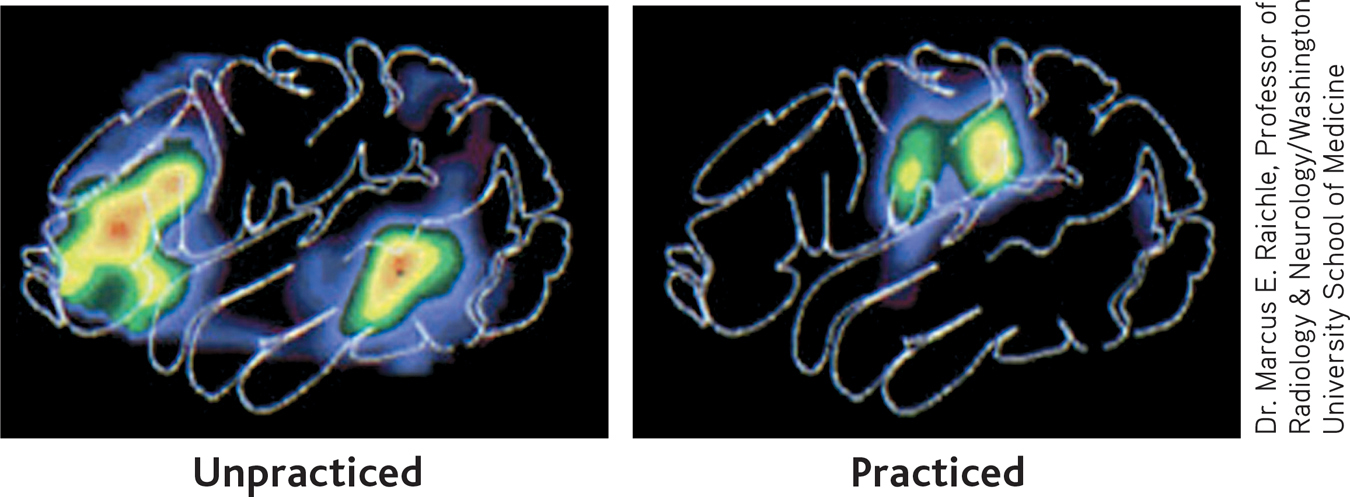
Positron emission tomography, abbreviated PET, is based on the fact that increased activity in a particular brain region is associated with increased blood flow and energy consumption. A small amount of radioactively tagged glucose, oxygen, or other substance is injected into the person’s bloodstream. Then, the person lies in a PET scanner while performing some mental task. For several minutes, the PET scanner tracks the amounts of radioactive substance used in thousands of different brain regions. A computer analyzes the data, producing color-coded images of the brain’s activity.
positron emission tomography (PET scan)
An invasive imaging technique that provides color-coded images of brain activity by tracking the brain’s use of a radioactively tagged compound, such as glucose, oxygen, or a drug.
Magnetic resonance imaging (MRI) does not involve invasive procedures such as injections of radioactive substances. Instead, while the person lies inside a magnetic tube, powerful but harmless magnetic fields bombard the brain. A computer analyzes the electromagnetic signals generated by brain-tissue molecules in response to the magnetic fields. The result is a series of digital images, each a detailed “slice” of the brain’s structures. MRI scans are routinely used in medicine to produce detailed images of other body parts, such as joints, spine, or organs.
magnetic resonance imaging (MRI)
A noninvasive imaging technique that produces highly detailed images of the body’s structures and tissues, using electromagnetic signals generated by the body in response to magnetic fields.
Functional MRI (fMRI) combines the ability to produce a detailed image of the brain’s structures with the capacity to track the brain’s activity or functioning (K. Smith, 2012). While the person lies in the MRI scanner, a powerful computer tracks the electromagnetic signals that are generated by changes in the brain’s metabolic activity, such as increased blood flow to a particular brain region. By measuring the ebb and flow of oxygenated blood in the brain, an fMRI produces a series of scans that show detailed moment-by-moment “movies” of the brain’s changing activity in specific structures or regions.
functional magnetic resonance imaging (fMRI)
A noninvasive imaging technique that uses magnetic fields to map brain activity by measuring changes in the brain’s blood flow and oxygen levels.

In the study of brain activity, fMRI has several advantages over PET scan technology. Because fMRI is a noninvasive procedure and the magnetic waves are harmless, research participants can safely undergo repeated fMRI scans. Also, fMRI produces a much sharper image than PET scans and can detail much smaller brain structures. Another advantage of fMRI is that it provides a picture of brain activity averaged over seconds rather than the several minutes required by PET scans.
How Psychologists Use Brain-Imaging Technology
Brain imaging is used for both descriptive and experimental research. A descriptive study using brain scans might compare the brain structure or functioning of one carefully defined group of people with another.
For example, MRI scans were used to compare London taxi drivers with matched participants who were not taxi drivers (Maguire & others, 2000, 2006). In order to be licensed, London taxi drivers are required to have an encyclopedic knowledge of the city streets. The MRI scans showed that a brain structure involved in spatial memory, the hippocampus, was significantly larger in the experienced taxi drivers than in the control subjects (see MRI scans below). And, the size of the hippocampus was also positively correlated with the length of time the participants had been driving taxis in London: The longer the individual had been driving a taxi, the larger the hippocampus (Woollett & others, 2009). In Chapter 2, Neuroscience and Behavior, we’ll look at how the brain changes in response to learning and environmental influences.
Brain-imaging technology can also be used in experimental research, such as the study of the effects of sleep deprivation illustrated below. In a typical experiment, brain scans are taken while research participants are exposed to the experimental treatment or task. These scans are compared to scans taken of control group participants. The differences between the two sets of scans are assumed to be due to the experimental treatment or condition. When multiple participants are compared, researchers combine the results from multiple subjects to produce a composite scan showing the average differences.
Limitations of Brain-Imaging Studies
Images are becoming even more detailed as brain-imaging technology advances. Nevertheless, brain-imaging research has potential limitations (Miller, 2010; Satel & Lilienfeld, 2013). When you consider the results of brain-imaging studies, including those presented in this textbook, keep the following points in mind:

Brain-imaging studies usually involve a small number of subjects. Because of the limited availability and the high cost of the technology, many brain-imaging studies have fewer than a dozen participants. With any research involving a small number of participants, caution must be exercised in generalizing results to a wider population (Button & others, 2013).
MYTH !lhtriangle! SCIENCE
Is it true that brain scans can pinpoint the exact, single part of the brain that causes a complex behavior?
Brain imaging studies tend to focus on simple aspects of behavior. Even seemingly simple tasks involve the smooth coordination of multiple brain regions. As Jerome Kagan (2008) observes, “An event as simple as the unexpected sound of a whistle activates 24 different brain areas.” Thus, it’s naïve to think that complex psychological or behavioral functions can be mapped to a single brain center (Coltheart, 2013; Mather & others, 2013b).
Brain imaging may not increase understanding of a psychological process. For example, although brain imaging might point to a particular brain structure as being involved in, say, fear or romantic love, knowing this may not advance our understanding of the psychological experience of fear or romantic love (Decety & Cacioppo, 2010).
Brain imaging is not necessarily a more “scientific” explanation. As psychologist Paul Bloom (2006) points out, “Functional MRI seems more like ‘real’ science than many of the other things that psychologists are up to. It has all the trappings of work with great laboratory credibility: big, expensive, and potentially dangerous machines, hospitals and medical centers, and a lot of people in white coats.” To be truly useful, brain-activity snapshots of a particular behavior must be accurately interpreted within the context of existing psychological knowledge about the behavior (Beck, 2010; Kihlstrom, 2010).
Looking at Brain-Scan Images
What should you notice when you look at the brain-scan images in this text? First, read the text description so you understand the task or condition being measured. Second, read the brain-scan caption for specific details or areas to notice. Third, carefully compare the treatment scan with the control scan if both are shown. Fourth, keep the limitations of brain-scan technology in mind. Finally, remember that human experience is much too complex to be captured by a single snapshot of brain activity (Miller, 2010).
1.6 Ethics in Psychological Research
KEY THEME
Psychological research conducted in the United States is subject to ethical guidelines developed by the American Psychological Association (APA).
KEY QUESTIONS
What are five key provisions of the APA ethics code for research involving humans?
Why do psychologists sometimes conduct research with nonhuman animal subjects?
What might happen if you were to volunteer to participate in a psychology experiment or study? Are psychologists allowed to manipulate or control you without your knowledge or consent? Could a psychologist force you to reveal your innermost secrets? Could he or she administer electric shocks?
The answer to all these questions is “no.” The American Psychological Association (APA) has developed a strict code of ethics for conducting research with both human and animal subjects. This code is contained in a document called Ethical Principles of Psychologists and Code of Conduct (APA, 2002, 2010). You can download a copy of the document at the Web site www.apa.org/
MYTH !lhtriangle! SCIENCE
Is it true that psychologists can trick you into taking part in a study?
In general, psychologists must respect the dignity and welfare of participants. Psychologists cannot deceptively expose research participants to dangerous or harmful conditions that might cause either physical or emotional harm. At most institutions, any psychological research using human or animal subjects is scrutinized by an institutional review board before approval is granted (Fisher & Vacanti-Shova, 2012).
Here are highlights of five key provisions in the most recent APA ethical principles regulating research with human participants:
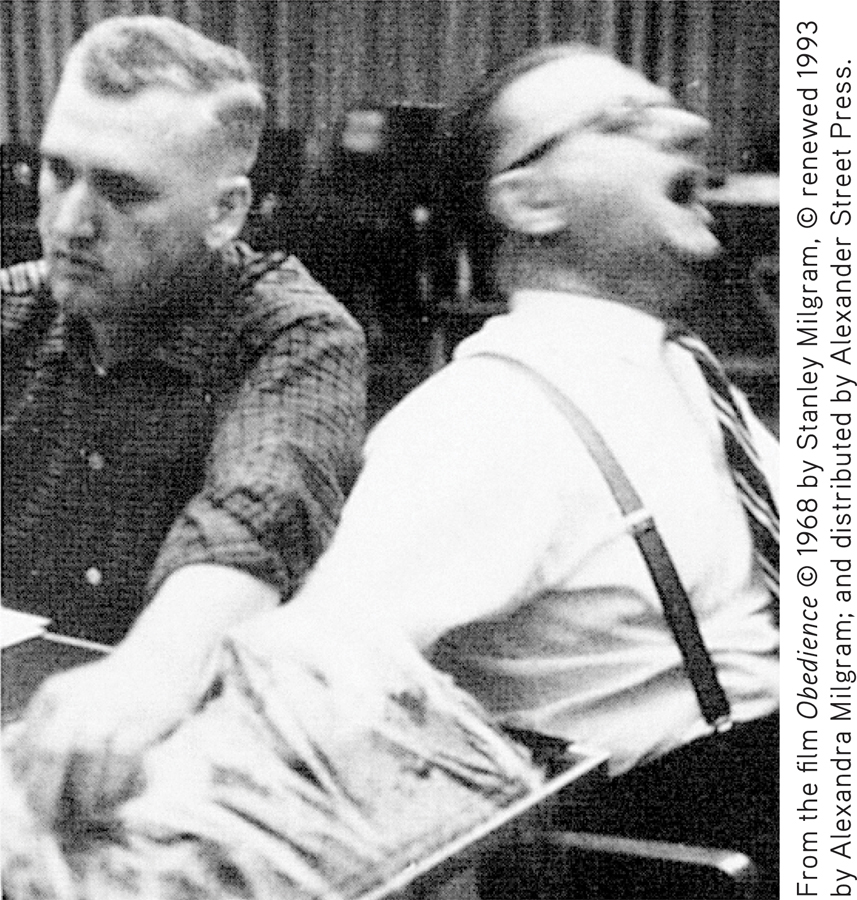
Informed consent and voluntary participation. The psychologist must inform the participants of the purpose of the research, including significant factors that might influence a person’s willingness to participate in the study, such as potential risks, discomfort, or unpleasant emotional experiences. The psychologist must also explain that participants are free to decline to participate or to withdraw from the research at any time.
Students as research participants. When research participation is a course requirement or an opportunity for extra credit, the student must be given the choice of an alternative activity to fulfill the course requirement or earn extra credit.
The use of deception. Psychologists can use deceptive techniques as part of the study only when two conditions have been met: (1) when it is not feasible to use alternatives that do not involve deception and (2) when the potential findings justify the use of deception because of their scientific, educational, or applied value.
Confidentiality of information. In their writing, lectures, or other public forums, psychologists may not disclose personally identifiable information about research participants.
Information about the study and debriefing. All participants must be provided with the opportunity to obtain information about the nature, results, and conclusions of the research. Psychologists are also obligated to debrief the participants and to correct any misconceptions that participants may have had about the research.

What about research involving nonhuman animal subjects? Only a fraction of psychological research studies conducted in a given year involve animal subjects—typically about 7 to 8 percent. About 90 percent of those studies involve rodents or birds, typically rats, mice, and pigeons. Why are animals used in psychological research? Here are a few of the main reasons:
1. Many psychologists are interested in the study of animal behavior for its own sake.
The branch of psychology that focuses on the study of the behavior of nonhuman animals is called comparative psychology. Some psychologists also do research in animal cognition, which is the study of animal learning, memory, thinking, and language (Wasserman & Zentall, 2006). And research is also pursued for its potential to the animals themselves. For example, psychological research on animal behavior has been used to improve the quality of life of animals in zoos and to increase the likelihood of survival of endangered species in the wild (Blumstein & Fernandez-Juricic, 2010; Goulart & others, 2009).
comparative psychology
The branch of psychology that studies the behavior of different animal species.
2. Animal subjects are sometimes used for research that could not feasibly be conducted on human subjects.
There are many similarities between human and animal behavior, but animal behavior tends to be less complex. Thus, it is sometimes easier to identify basic principles of behavior by studying animals. Psychologists can also observe some animals throughout their entire lifespan. To track such changes in humans would take decades of research. Finally, psychologists can exercise greater control over animal subjects than over human subjects. If necessary, researchers can control every aspect of the animals’ environment and even their genetic background (Ator, 2005).
The use of nonhuman animal subjects in psychological research is also governed by specific ethical guidelines (APA, 2011; Perry & Dess, 2012). The American Psychological Association publishes the Guidelines for Ethical Conduct in the Care and Use of Animals, which you can read at http:/
Test your understanding of The Experimental Method and Ethics with
 .
.
1.6.1 Closing Thoughts
Remember the students in the chapter Prologue who wanted help with studying for tests? Many students come to psychology courses with questions about personal experiences, seeking help for common problems or explanations for common and uncommon behaviors. As you’ll see throughout this book, psychological research has produced many useful insights into behavior and mental processes. At the end of each chapter, we present research-based strategies that you can implement to improve your everyday life.
At several points in this chapter, we’ve described research on factors affecting academic success in college. Fortunately, psychologists have identified several techniques that anyone can use to improve their mastery of new information. We discuss these techniques in the next section, “Psych for Your Life.”
1.7 PSYCH FOR YOUR LIFE
Successful Study Techniques
Psychologists have conducted literally thousands of research studies investigating learning and memory. In Chapter 6, you’ll learn some strategies to improve your memory for specific tasks, such as memorizing lists of items. For now, here are six research-based suggestions that you can use to help you study more effectively—and succeed in this course and others.
1. Focus your attention
Many students think they are good multi-taskers. But do you remember the correlational research on multi-tasking during studying? The psychological research is clear: Attention is a limited resource (Chun & others, 2011). So, when you sit down to study, put your cell phone on “silent” and try to avoid going online except for topic-related material. If you find it hard to stay on task, set a timer on your phone and challenge yourself to read for 30 minutes without interruption. You’ll be amazed at how much more efficient your studying is.
2. Engage your mind: Be an active reader
One of the most common study techniques used by students is to highlight or underline text in handouts and textbooks. Highlighting and underlining can be helpful, but only if done properly (Dunlosky & others, 2013).
Research has found that you’re more likely to remember text marked by highlighting or underlining. The problem is that you are less likely to remember material that you don’t mark. Thus, if you highlight the wrong material, highlighting may be more harmful than helpful. It’s also a problem if you highlight too much material. If your textbook looks like your younger brother’s coloring book, you’re probably doing it wrong. One early study found a negative correlation (see p. 25 if you don’t remember what that means) between the amount of text highlighted and test scores over the material: The more material students highlighted, the lower their test scores (Fowler & Barker, 1974).
How can you use highlighting and underlining to improve learning? Be an active reader—and a selective highlighter, highlighting only the most important information. If you have a tendency to highlight entire paragraphs, instead choose no more than one or two points per paragraph to highlight. In this textbook, the “Key Questions” at the beginning of each section will help you identify the most important points.
3. In the classroom, take notes by hand, not on your laptop
A new study shows that using handwriting to take notes rather than typing notes on a laptop increases both conceptual understanding and factual retention of the material. Students also had higher test scores when they studied from their handwritten notes versus studying from typed notes, even though their typed notes included more information. The explanation? Students who typed on a laptop tended to simply transcribe verbatim what they heard. In contrast, note-takers using longhand had to listen, digest, and summarize the information in their own words. Doing so required them to deeply engage with the material, which led to better memory for the material (Mueller & Oppenheimer, 2014). Paying attention pays off!
4. Practice retrieval: The testing effect
Hundreds of experiments have shown that tests do more than simply assess learning; they are powerful tools in their own right (see Dunlosky & others, 2013; Bjork & others, 2013). Earlier in the chapter, we described an experiment that demonstrated the power of the testing effect—the finding that retrieving information from memory produces better retention than restudying the same information (Roediger & Karpicke, 2006; Roediger & Butler, 2011).
Are practice tests helpful only for factual material? Does the testing effect only enhance rote memorization? No. Practice tests need not be multiple-choice or short-answer tests. Essay questions or other tasks that require you to retrieve information from your memory also produce improved retention (Roediger, Putnam, & Smith, 2011; Roediger, Agarwal, & others, 2011).
And, studies have shown that practice tests enhance memory for all types of information. Some examples include spatial information, such as map-learning, and even the learning of new skills like CPR (Dunlosky & others, 2013; Kromann & others, 2009). Research also shows that material learned via retrieval practice transfers to novel situations, when the material is tested in other ways. Thus, it represents more than “teaching to the test” (Roediger, Finn, & Weinstein, 2012).
Why is practice testing such a powerful study technique? One reason may be that practice tests counteract the fluency effect. When you reread text or review your notes, the material seems familiar and easy to understand, so the tendency is to assume that you know the material. But often we mistake familiarity for knowledge. Practice testing allows you to identify the gaps that exist in your knowledge so that you can better allocate your study time (Roediger, Putnam, & Smith, 2011).
Practice tests also allow you to practice the very skills that you will need to succeed—retrieving information you’ve learned from memory (Roediger, Finn, & Weinstein, 2012). And, some research suggests that repeatedly retrieving information seems to help you organize that information in memory, making it easier to remember in the future.
How can you incorporate practice tests into your own studying? Take advantage of any practice quizzes that may be offered by your professor, in study guides, or in your textbook. Challenge yourself to write out the definitions for each of the boldfaced key terms in each section of your text. Even simpler, duplicate the procedure used in the experiment described on pages 26–
5. Use flashcards and practice tests correctly
Millions of school children have been taught how to use flashcards: Quiz yourself, and if you answer an item correctly, set the card aside. Keep quizzing yourself on the remaining cards until all cards have been set aside, at which point you can conclude that you have successfully mastered the information.
But is this an effective study technique? Should students skip material that they have learned in order to focus their effort on material that they have not learned? Let’s take a look at a clever experiment that tested this notion.
Jeffrey Karpicke & Henry Roediger (2008) gave participants a list of 40 Swahili words and their English translations. All of the participants studied and were tested on the complete list in first study session. Then, the participants were divided into four groups and tested a week later after completing three study/test sessions (see figure). The results:
Students who studied and were tested on the entire list in each study period scored 80% on the test a week later.
Participants who studied only the items they missed but were tested on the entire list also scored 80% on the test a week later.
Participants who studied all the items but were only tested on items they missed scored 36% on the test one week later.
Participants who, like the traditional flashcard user, only studied and were tested on items they missed scored 33% on the final test.
In other words, repeated study had no effect on final test performance—but repeated testing did. How can you apply this finding to your own study habits? For any type of practice test, don’t stop practicing items that you’ve answered correctly. Especially if you are using flashcards, don’t drop those cards once you think you have mastered the information—keep testing yourself on them.

Source: Data from Karpicke & Roediger (2008).
6. Space out your study time: The benefits of distributed vs. massed practice
Psychologists call it “massed practice.” Students call it “cramming.” A common strategy for time-challenged students, massed practice involves trying to study as much as possible in a short period of time, typically right before an exam. Interestingly, massed practice is effective—but only in the short term (Bjork & others, 2013). Typically, information learned through cramming is forgotten very quickly.
A much more effective study strategy is what psychologists call distributed practice, which means that you learn the information over several sessions, separated in time. Countless studies have shown that information learned over distributed sessions is much better retained than information learned in a single session (see Dunlosky & others, 2013; Roediger, Finn, & Weinstein, 2012). One reason may be that the time between sessions gives you a chance to organize and incorporate new information into your memory (Carpenter & others, 2012).
We hope you find these suggestions helpful, both in psychology and in your other courses. Welcome to psychology!
1.8 CHAPTER REVIEW
Introduction and Research Methods
KEY POINTS
Introduction: What Is Psychology?
Psychology is defined as the scientific study of behavior and mental processes. The four goals of psychology are to describe, explain, predict, and influence human behavior and mental processes.
Early philosophers, such as Aristotle and Descartes, used logic and intuition to understand psychological topics. Later, the discoveries of physiologists demonstrated that scientific methods could be applied to psychological topics.
Wilhelm Wundt, a German physiologist, is credited with founding psychology as an experimental science in 1879. Wundt’s student, Edward B. Titchener, established structuralism, the first school of psychology. The structuralists used introspection to try to identify the structures of conscious experiences.
William James founded and promoted psychology in the United States. James established functionalism, a school of psychology that emphasized the adaptive role of behavior. James’s students, G. Stanley Hall and Mary Whiton Calkins, were two important figures in early American psychology. Margaret Floy Washburn was the first woman and Francis C. Sumner was the first African American to be awarded a Ph.D. in psychology.
Sigmund Freud established psychoanalysis as a theory of personality and form of psychotherapy. Psychoanalysis emphasized the role of unconscious conflicts in determining behavior and personality.
Behaviorism was based on Ivan Pavlov’s research and emerged in the early 1900s. Behaviorism was first championed by John B. Watson and further developed by B. F. Skinner. Behaviorism rejected the study of mental processes and emphasized the study of observable behavior, especially the principles of learning.
Carl Rogers and Abraham Maslow promoted humanistic psychology, which emphasized psychological growth and the importance of choice in human behavior.
Contemporary Psychology
Psychology has become progressively more diverse as a science. Topics can be approached from several different perspectives, which include the biological, psychodynamic, behavioral, humanistic, positive psychology, cognitive, cross-cultural, and evolutionary psychology perspectives.
Important specialty areas in psychology include biological, clinical, cognitive, counseling, educational, experimental, developmental, health, industrial/organizational, personality, social psychology, and applied psychology. Psychiatry is a medical specialty. Clinical psychologists and psychiatrists differ in their training and credentials.
The Scientific Method
Psychology is based on empirical evidence. Psychologists are trained in the scientific method, which has four steps: (1) generate a hypothesis that can be tested empirically, (2) design the study and collect the data, (3) analyze the data and draw conclusions, and (4) report the findings. Variables must be operationally defined.
Research methods include descriptive and experimental methods. Statistics are used to analyze the data and to determine whether findings are statistically significant. Meta-analysis can be used to combine and analyze data from multiple studies on a single topic. Reporting the results of a study allows other researchers to replicate the study.
As research findings accumulate from individual studies, theories or models develop to explain the different findings on a related topic. Theories are tools for understanding and explaining behavior and mental processes. Theories can evolve and change as new evidence emerges.
Descriptive Research
Descriptive research is used to observe and describe behavior. Naturalistic observation is used to detect behavior patterns as they exist in their natural settings. A case study involves intensive study of a single subject or a small group of subjects.
Surveys, questionnaires, and interviews are administered to a sample of the larger group to be investigated. For results to be generalizable to the larger population, the sample must be a representative sample. Participants are usually chosen through random selection.
Correlational studies investigate how strongly two factors are related to each other. The relationship is expressed in terms of a correlation coefficient. A positive correlation indicates that two factors vary in the same direction, whereas a negative correlation indicates that two factors vary in opposite directions.
Even when two factors are strongly related, conclusions cannot be drawn about causality because a third factor may actually be responsible for the association. However, correlational evidence can be used to identify important relationships and to make meaningful predictions.
Experimental Research
Experimental research can demonstrate a cause-and-effect relationship between one variable and another. An experiment involves manipulating the independent variable, then measuring what changes occur in the dependent variable. Researchers strive to anticipate and control for the unwanted influences of confounding variables.
An experiment investigating the testing effect used random assignment of the participants to the experimental group or a control group.
In the experiment testing whether ginkgo biloba improved memory and other mental abilities, the control group received a placebo. In experiments testing the therapeutic effectiveness of a treatment or procedure, it is important to determine if the placebo effect or practice effect contributed to the observed changes. The ginkgo experiment also showed how using the double-blind technique helps guard against the influence of inadvertent demand characteristics.
Not all questions can be studied experimentally. Experiments are sometimes criticized for using artificial laboratory conditions. Although not a true experiment, a natural experiment can measure the impact of a naturally occurring event on subjects.
Brain-imaging technology is used in some descriptive studies and experiments. PET scans and fMRI scans reveal which brain areas are active during a task. MRI scans produce detailed images of the brain’s structures. Limitations of brain-imaging research include focusing on simple behaviors and small numbers of participants.
Ethics in Psychological Research
All psychological research is subject to regulations contained in an ethical code developed by the American Psychological Association. For research with human subjects, the ethical code requires informed consent and voluntary participation. Student participants must be given alternatives to participating in research. Deceptive techniques can be used only under specific conditions. Records are kept confidential, and participants are to be debriefed and allowed to learn more about the study.
Comparative psychology studies the behavior of different animal species. Research with animal subjects is governed by an ethical code developed by the American Psychological Association as well as state and federal regulations.
KEY TERMS
Match each of the terms on the left with its definition on the right. Click on the term first and then click on the matching definition. As you match them correctly they will move to the bottom of the activity.
Question
3lwMmWwFgFtsl6KibEJUIAW4mMHINsxeQecHo/CTZu1IxZVKqpWIa7PqUzz5Oi0t5uV0QBVh5tQltGm3+b9VP88vlMGBLd7HAEL1Yk3tKYH0u0pXkxT2HBEgmPDn8cQZ2LPsuwRiGoIdIlX+PbvPhp+ZHoy3Pg5XLGEX+T2f8DTdOxwfx90ni+WvwI3kP2P+oHiKeC1LAfFD+jaXDAlxp/jgNjILEsglIL334WMdJ96LqAgAglXAqRlLxNjm8e6e9RDdSA8WascfHhzuktEvJ4p1dxkJC9SbFDzzXTbedhyRvCIqmpgbkxuZ8w+uO+Tv4wUXPnUb3bK3+5Xaob/UaswNAnyAQ1kPEtv35z/EPl6J9YORb5PVAfNbSEbjPvZc/aOVMmUbrJa6wnumV5QIYS+RlxV2GjEnbrPE30G7CtQoSgfU3DyQ6p0nSncG1eOR1vipDXv76TRnA4pHDd8Zd5/NebvJwMblQgHPyeE79k6buqFNTgkGULlddL7i1drfyAgq1zwGlHBae+PpOpeuiHq2zE/p3pqoJtMX6+nuqnnQnOXkHl9x0YuZVzgKZEYtrEVVaKB2UPHaUjtoEgE0Np1xRPU5OtgNvsb8qfBbzat32KBU0uaEBet81mA9vutLXt9VWFwU9yYGtSyIrI+mvDw0PA0ch8Tz8bNQRKOYxmJDmq7gWerQKRfEOjIi/ZJkjDtqMZBAvZvMeC21JWGis6DHY0+NOdJ2R4kXEydqYo1BAEnFHLK3yGFfmwZgoOCDKMPJ4CDhwqbU16ZdG7cpfihOWHXILmpqZ6fBwY/D2uYPLtuE/MEyyGzOgENvFXWNe8emjUJotWbg9f3yLAioml/f0jnN+Hn/yBe9slALJC0RFOVE4hNJ0bVt+7Oi+SR8MDfa0B6iavnsJeD1OKswtxXWhnAa52cj+2EZZJ++COXeEQp0XTBaSAXg000HO49dBWYYYUGt9YLp+YfL2/laBNnEFxZOhcvjQRDidqtmFTx0cYfkpxNItCBOLcjn7dPeVmD0h11JruPJEhF/ZD7mddGw+X9o0KyOfPyWSmO4+YUwxyHMFqjaVKwEjkslfE2Y4MAagTCp5bEYj0oshr0nGJkpTHBF6czmedrq09kd+NxdZR+JfH32INPFwuy9tL434bJsn3escc+bKtllQLl7JhnC8CFp+R2HrvgdV2rsIz2Sf7KH0o786N6EgkfawRAhGOPqDw1kj/PLiEDc1J8iLBY3f0ISau8byo32wHFAeIYNUmrRDOXgbsFLAoFNSPP+nWFBvR7Hu8GKN0P0Ydk2KfPqcHThiAwUObdihVjNrf7THPVE2va0tTC9yKmI5cWcQGJo+somMqG1eJD/MtHAwdmvYTmjx8EHf9F1chVyfjjdgreXBW2DKmed+cOQ7Bl5ADmYqbMZYEKbNZ4s8UwgiaDfOEfuYIVcMsDVghCdMou8aNH4zzs8H1/3xfAjRm2+gkCTkOtmfo2FLIM1LG+tiRBhvCWRd8QnH6hjnxo8t+uHkIf89UPpvLPqJZVThq647gfIiBMD8HKEHxUV1kbpi2JiuKG5n7DkriPNYqY65X8jfnVCuv33POgKEaeTMXCg7DQKKHN4pJIH7268ZUWi0rERVOTLMmQkRFcu3fLQe6FTlWIFTqPBqe/9wdCUjp6fu23wU5SXBR+lwLL+C4cUh2ivz8jAA50bqidNG40qgjzBbQArvG+7saSLLQ1jR+/q1tIlV6qKjcuR2j6InSePoLSWJpkE+IwH9oXM8wETde80cmQHGJxhaC/ujQaTHv1HpDn4wSTuE7FSxScekiCsm/J40Hb2O9KzgrPZlUZ94KUpNlXAA/ZyKueqwHdKAQltnasllKcXz6uFjbRQHv4VUcSujgbQfkXJblXKC3eQE4YuRVatBFOc+uznNzef4KFGgLf089x+FKS+88l2kKk/OyTMuB4AYPGzfHXVpdO2mqwAvWsKj69dwNvhBRwOFFV45JJ/pUAG4siNpHWoPD+FFuf042CEYKoZ6KwiIdhSbsgMgCDKlfMWtKQg9WYXzj75+82MRXou3t5493asUkKWo4Y+g6AaQvBjXQxkxbsOAYQYP0CogIeC4xopE+wlOLTzYs2C36j8uOH+x1+dH8AB1aUqBAWppNx5iwxMR4pW7fk6px8aOHM4HxVsQXTj5+b6gBeNE5n51hJ3Q29YhIeFoyR893Kx92aMyZAI8e7YRN1Dc36b2ENjj2XBu7OZQvAqrSyzpQBTL7UwTNaqVnICSCjhYKBtCfY71Ez562Jp5oOv4d7lcW03vZrubvFmKXC7jGU4gz/2HbWwKTCzwZdnG8zQIDXkpF9S0lRmPUe2xLnvOdgYv6K7GcDZ7PNNzh6DLB/AWO+KGmVXaFCWn6xjV8daH0XtrQWeWaA7K7fG6SlbSd2liTEcEdU32ryyXBfhzXyDDdmR3LQewLb2rB7yRO2IPMkH9QdhBpN3FZbk7Fu4V2XrSAIRMxORFmaGdJEe3a87pObX7/2/9YF6X/INpfvtwwOc0v/Y9X28K7uLxeibA0OP7X2KyXUgZWsM10Aiii0ccECyaypxJARG94ZWVd7uTTmbEK2dyITi0d0LTK0StR2ztWKxusRbS7aMwFk8jJuNWdyI0e4gwp1UDFfo8HvfNyBZturiQX5Wz9teUEH1PfZhLSl3KOOYnGb9x0YUiUMDCXvKwB44MLij7zLgIN7EYIHfiFG+Z5t1qRZ9LwJ7p7RQdkbQveO3W08k6B/8O7WTgYQG8ONixhNNyKpXwdIZraKwIbuPfGdrFTggsXzB4jfKbuKDxBw1+3JDBXcSj5QiLjsq1GYBwxq8QNC8TDBMmdRqxJ8D575w2sql8p/COdCsLSP+B+Yn6EFRGbQntnLupp/glKYhf98paVV9KSrwphehAsKNoDe2l+Vkf0WDXavvsZnvoHBsqo1/QeF7FzE+/fSzxn1x3QuMkE+W60y3Yi6ynzoyBp7rBeC8Hmcrl+pzqSj7X+9jmd5ncNNvJN0fsnrSjfBRCAyPgHk++KZTNn9/FjwSCP8FLQGnnqBLERzYj2ApSF9754lvRvtp7oS82M7DE8xnF2/tsBFX/x0K2uTdhJo+FySYFpQI8mjaU7lol/uBjvSl1A12q2RT41LGj3jBYCeFNP3pJ3Ndu1zfWreooLWy3TEyrzC3kZo114YAMjPqMxTzj7bUuqa74qvXFfPo1G2WMIoylZjp50WVM/iNIlWe1P8ENXi9Bbofl8XETQGlrfqOoSAXKcDl/KhnAuUE6jgQZ3owXNZhFbSrFSd1axiJZk9uX4N+aM2LTao2pqNhMOC4FbH/gdoISezL7M9lEzQkBcOIF4WMw1I6fKWJCFNbBfKrNHGJBbCg2tlBGXdkGs0zv7LKufPtIoMnwvm3yi/seGIXODzWDC9ILX4k4LW/7Ey26pczvFlq8TGqoHezalvfzeKHMHWK+DzQBARizi949BwBIp4Jy+7TNhw9MjNrLnAEe2nXxz/WNtBRl4Z2JIuPc/fe5bcyqINC5EDrTpI+f/Fg85kDPcs5Za3MHblJ8Xoi+gY39mcB/1a8d2zoAl8QRnny+OKs+ijL3VBHPUgp3ttEEp59UQSP2AQlDEiJCUvM8YLqK8bZ5xzFAmLIeZ8dstzvgQSsIm78ii/8qkS82RMAJv9P/uWvdRMnVX1ELSMOC7BjxXd36RFyeqTEvC3tNiDeUye2WEzGkBbXCm4zp/Ml/9Ah3Upm49RogmmKNpKN4e4+IyJ+yH7Uq1EwpUVAJrpXAzrM6z5C8wl+HxkJj2MRShTWTKRzl9tMkR8UUkakRFGtuO4xIyMc1uWgzvH0EPdDCzoyVQeJnc7HfxhLf7mrNqTlqNh4KYPHlQNN8icSE7nDu9sdOla4bIFhHmWtFObm+2ZXxXr90Lf9GOYPdXsXK8qwze6guLvd6Jh5qAlD53dQqg40DzLtra2lCJ0hJjcS8ZQtFw3TyS9LcL5u9ULyWXSTNQ4Fc7wbtIALL5UFyPZr6KAxTo2RfY37gofTjAf9TZd6Lt40U6dzusS3FNLfInYTWTomApAIQw1d16XzhvaX0ntN87fg+fDQTj1iiR/zGkQvqZQON4cQKgUGtLUZueZZbTnm92fAReFL784+hF5QF/ROMUGkENP4cU3zRVLGsPU35yznirWvsU5WfbwpqeiJ63nZb3WWsK36pTWR7KbUoJtG1fLrNdkdQHLl2KncVEp7nEyxruPo4d+Vt9tPrJOsHJrrQ9daq2oRASt8Dm8/Qk/grb5A2JKTM1TAKEEnB4lGvIie8j855zEJ+yrKzfhfM1yHphrIlXoDJge+f9Ld/NhJzI/oK1uPbH8q39ChMi9YjHuEPbsI/dbcDTkTCT8y8/MKMJHhRAmL6jBLc9TowKZFxjiBDKt52W0frIGfl9XQzCih8lyrWISUt17r1BhpdlRF1/bBeeuN17pUpJ84vJQJ6LFkE/MzMAQVbcOkawYEKD72oiBhe3T0jPR0ZX7dHepPJB1E/FTHWog1hBiFwrXSvmKBWtr/7c+0/uft6tI63hpxCUN63hmY8dYQy1xwxoYbuUyxnaO2aQHLRWKVbTBUhuW5WpXBroX2i2Oq3QVC2ZNh9Dv9GcAzizCLcoVARwipoWt1tH7ZGW9HNPMGOvdjihwh6E1VdHxQwDZU13VjE/NtRSYoa+J3/p/1YLDXCa192rm+sBrFncSfU4tjMfH0rHdPdszZjkiKLqZOaNzV+Ltr5fb40l0Nr/8tx2rJSFkKA7f1HHw6dpkOBsZuMTSls0bG6Mm7n9jN03JQ+kAac5VIzLIj82YYZRVaXqVI7goeDlUsHe6DXjfd0cAxRZGbb89B/KJHG5FZ0Oqjb6A5uGRVKrXqZ+V1WmD9m2z5Rd2XqrCpuqyOCvnNCp5YCnYRVMrDuZWzUbwDdRVNA/uGOlDixmZ9xX5P19jVm+fWDdoCr8eTgBDj/2+fht9f2E5/oEe6kg/zyBbSjvSaJcCUJqjtdh9zJrCMmZBps7dn6Efq+fk8Gvjyk+IphR/1ZxVzOoWNJ9ZTNgoVzqZhMZZ4DecU7tQgmYMti9ybB9vGq4wA0ZDosVZpYoxJm3iDG4jq3x+kz40zxYgsh4xC2BKqc2ZAeEhQLn77+n2cWZi5U5wv7AAgSt1I/2EEUM5a8wQ/gd4XCORbwNk0+BdAn4zasY7LbCe0zHiQz+UWzevt+nC/M8H7Z6k727dMB+7FdD0BARmSNgwpljXQL06ZEWpeXm9Po4dV4XuCazcIunhTY6p8LkdIx5VWSPCHd6BP6Vy4x4eMy9x5Yx8fh9A0yR+lnqD41ss32LGsZkcyRum5GW8lhqntpdzx1jlAvfzQJwl/nuH4r58BL2KczEhT/GHa3CXPDgq9oTgSnNOGc2X1A+gLDzT5iQItoX29B/IPywc3hXi2s5ZjU5xiYtZLOkzrjG0oRNruKyqgaYQF9EsSq5KwSRudrFefWyvicaJrkSD/be0oGiChUbYlJFYrUi49cHFLdw6UGMWtmHap+ApfEIlaIZHDYDcb6GSrd/LGQ76MDFjXVpI8slNbdWG6iRpc3bV84aXBYMYDQR4IvJv8wvYHmrn5CvC63P9EWfMCiqnZkYhqS3NuRtB+ue3FXGfcjMECUj0/vhZH0w8/j3iskl4aHTIYsh/6jxqFajx8EdRfot0tTtDe3GvcedHjE/wez1Lg8N6uLLh+XoOy2LSQEEgGHFRilKq898KCLG/1AmJYANVrKtlk1/qj4j86QEIMLRGPMaVMgam/k+/SD0RKvbZia98Vckz3BCplgYOKou4PQbogfK+QzbAujt4swQDSBq2N1d7BXgnhHArZ224zv2+LcHDfLqdsvY5EKrhTRncQJWyM356qrj96mfop9e7y86SUahsnGMixmSXP4ox/m1WbjwnEjNxwP2EcYmrmQTEwMVuX1zef1b1ajABy/cFdTZ+Ef/TbaxQptl8ajDLFPvPEgyfRjue0cRtiWE0FJNGeQAKFKqSg98kNed9hsNAw4QWaaMwalrSdQZqRhL5F7cOTqb6DFt4ubiz+t6wPuTbzBbaMt0TUYaKuXfI6V/w6qbBtw7zMPYtSgmHXy7p0FjdXXTa40r7Rae6yMWEZMRXo15emD1i8s655zhEAw41I3Hcvx9qht9UPWjl3MqDJtTCjTmY6RqyF56lIgKfmup8k1FDrHANoT1pzDiydi0JuW/1yXVsRNlrJkdaAPCvDi0qAkeXDd5VmqlpFTpMIbp9y2Bk/LlF5wOF/hxZw+tAlxD/ifj9QrVO28btV/WOzNa7g647lPyE7u4giwjSG4eVS0vBRq6py0Ozm5NywudC9Wje26gnS1KHXwxQfnuCkmh93Unasqwd7WZ2adqYuK0UqsFnl8xvWmfM9nzC6aeZNiLgJUY4/iEekaX0GtIhXWbWa9YJi7ZHKWmgQmfA4NZF6nWEuX+NCKVjKPF2qJ1BqMtwyKerWmv8Wt9WtrS5sfpZqr6g2lGkg8UJ/SIRgGD9dqxaR/3PM79/tr4vDjVhvzHsxM/j0jXyN3HMdxdjXDhHrjkTALW7ZOkfDTMMAz3NQZ7XmWoyL7FRO33BTSwdPRhSpNMJ23Nzc81SMqSp2q472QQpG1A6iJUcxjWycqE+BgJJ0pjkARi8swB1OzdmEmYsXZPr14etrDwu9SRjFnWpyKtw5GD6VSsn9x/1IMsA7RBVVnPqc6dU8SUrHkqXbMzvf67HUfQ9GZZO6vHEbOp0SDZkVrwZz4xbW2LRWjUK9ovbuyQF1N+ENy18CTjC/TN6a5TYWYxRuR2b+iIYMnhp77rGggtc7jVAm4oXYLGN0zTThHYyF/tNIRnFbV7aXZWDpAveu+Dc1wUeToUHyvnJ+FUVWF5hO+VW2PBUQuBbEZSZ6K85Tayt8U6ZBmwPicarN9U0wp111Pyi2PoJqha+B6S4UKRzt/oyJex6Te6AKmgCVZoWKL350uoCK1LgzDi6E+5eMkVrI8hmGM2kACn0NrRedwVTLKYsIPtsMO/HzmCLcFH1XQ4mOVpow/9JG+qtSNyvzmnBWs0YrkADASH5P6VHFGDtaRolwHpzuzqrVo6h3iwyfpKDsW/44S9CNXF7o2ls1wfbks3NZ2sxP1SNzNIkLK5tttelQ56GwjFAEIY4aqS1Tl/I0xLm0oBNdI3U5klbbF23u78peVJ2IUqD43lIXRR3bY4wX60ZSXVLvJY/caRuT6KKbkgIxi6L5wcTouw4uycKhTNywWfdc9ZyKzix8fF8sCGKfxlV2Ho0UG+ebO5SHPLe9G3JNEt8lknN3gAfhQrnwMMcvMZ+lnEFqoD6vgcoDhdcF9GlHnIjuvr/CprhdJf5hKdJ8LuQK6qQ5WuhPRYM20QSS8HOxISB8wR75o2/KjWysxkzGTostpf4IXc37L1hL6+3ujfAgcYP5TH9cVIYi0o6MELm/5r5ILVxHuSmNcs4xttzNBabCiSPPN/YRNgs1Q0q5dsj3bnBGD4izfzsr+/POl6hTyN73J64lLDljcVKasx9CJkKgtFXygcjiNswXtn8mwir+pO0//LgBgFwOfoIFo7HrtsW63KxX3lUovbh44rz8qiEOH3maSFs1uF1z/dOa9CX63TAR3hpTQOYnu77L6kOSYrQpe9yeezjSh0I1SeghyJLCqkf6PImmIjAEsF4PDOar9k3CUtJGrGdKBd2XUWxYDr/eHaou/OX1zyT+G4I8jcCCF0bOni6nVqvRNmUUEvkC9ljLRmfRSCge8cPlBNwZPJKUPqADBr3B3u8t4/OBxFmVia/E1EYfYgj/9wNTkxYaBpVCXKQxPqiOZp/gxJP2v8UDyeqmBA628jnZyfih0FTxGKWiPheLXlmegNoNAgDwaoCjJ1a/z5iazVqo9QzKx692MbzaTKafI523R0kD+jw34nYG71zYouHz9HuJDidKbW1DL43+PWMb3Caayz4mvUVTY/CHV2OCBvroEB+f5Psw50W5dCoEWFLi4a9GnwJCkR0T7VdWYAQYbaaiJQ/FWW4W3E5cazsvhwq7RsIGcsNOTTwperYrmLX0tVfAMWVnKyd2Ho3mZbQShNlyr2hYX+JeOR4MKnRMTZR/1N/4nIIPrnFWFPT2v//D+f8G2ZgwX+HnXJjW4ivBv88QL0gc+VlfmhMkDcDRW/ThmDwk6vpZ783XkrfRtNnkgBhApOWV9QTeNrta3lxZwEOUSH9TXW9H+cYwzQs6sEWz9JcQzaB1OoExSJETR9Zg+KKG9rcU/EBxBPvWDdIyYC+6DOl8GMLwhvyT/287RIcO5GGVTdxCyHWzmQDiKhET2sX313NH83QxEdhp8wy8oACGRTjN/KDs80/eWP/qXLQYIs7g/ZQ3u66cLcIQAfUbOii961k1tIhT2TxO26YgKaS2FyggcR5rXaCxXCLrZWzg0JY9DOHkWxOT+T9nykLAunt7vT6epfGSC6l4yoGh229+d/bgx+YG9UV/uS8Y9IUI9xyh7DRGZKKODSqdEcns39S880iA3uysF0bNxqyg9AotauAJsKz88FlyXqCQxVcDkySU56x6XWKgEX1vPv1ZUV4sBTzK7++GxgegKglZMbfw5rTcUQqxfYaJQuLTP2CnHTCY5jJl9g1SHWtQTUm49UynfrPa+vIW32VeqPHcGczT/TdY/dQSCi7kOfJhDQesHui4fU1S23mlX9JxtPYrVzihqMLymH1TjjEQDMUd6ewS3Y94phcfvKgfL0bHjJhpBspLdHat28KpPnnwL5x/GH1eP+L2j+fUQn7/hmvYi5pgIq3gZzPGniQZR37+xjBYkG8F+iQCdOfmiNFsFOxYJsE4v8CMf9Sh9luuWncUTBF0oNu/sm4M+TTR61CRRFyLSZUxJNvlwUa8zrnvY1GyAKM2DIqebJuWaWiF98YFxXyq9h8ZPDzwZIvPJ/1OYLFuTKsKONnLo8Mq7bPE/TwbR3kc4gBuqGRJtTTrquPQzU97kDZSSZThK2KO5ip8tLuZUG8r+kFUh2IfTzTCpK+/d9dZmTN4bsKgSu29THyPFv2sFy42CBUqoikoAwy+unDQM7lQDs92S+o/+MGQx2NyOKRDNujxVXB+m8q4GvQlQSEY/3grYS+kv47f53oYVWqA9rsKAyR0KKSttbfg/bqQ0hfzsZMf4WBFYRSEwmPR3JqGooDYDD/Pek5H+n8ouHXH/yrSmt3S5+qUdUZpxVZMin0+ZDknp6AZcJ5Nc9FkHBHScoN0J1MFAeHfG4kg0OLoDDzm25Xt4Igb2XUVLghdjFVAiwcmQ8FjXWgNCq3sU2TMARnucKCT/DLHDqH7gvche5dv7/vmRQfgdf4AkI125aHhcUkAqFH55ZeQ9Folu4ONKRr85+ajDLR92BHmaSHQy9bQkng+06M1xjzU9LLRqC35yk6LuUUEhSjLDQXPLZ8ZMP4zy7TKXqQn16BWYEmEiGCYEh0cuChRLhlTDsxlpZwOS54obC88uvgpfKEzaOTANLJGfD+IdnvAPeGkmKJztEQbpUlGuRA8ZpgaodOYebRGZxaygju2KvIP3BoEpwPjQQSdlBCjlGia3c8WJ1Ik1cXfX4L6JOh/6XNG+sScZ9WQtNBCq7J2fSFUH4nE5aW44RZIFM2DodWuo6Gea5V9S/J2B0rfdgAlYlelu2uZ24ZsCQorCNesiM2sP6yk22ySwm+4MzYvElGcnxjqjwPNcDqLGFmn15LR2DJfNBEsRaQnRhyyEeqEGLGKN8MqPgQj/Kr9xtgg2+gS4f0eWlSNRwJ/MsgN3FDZKtl8SWrnfoopnF+/1m+fT3wlJDD5tRBiNRH0T81IYRmb3hEI6O2J1Xk6aUnzsjV/TwLgs/gMoYUxAaQBn63HGwgDzCr6Xbxhf66BECfgw3Uy1LkoaLMR5cgCjbivdRlN/q41fVNnZ29tlfzXDo/djvMzb8KnApVLa5KA4buXtnI3F/D8f8GKSrMsIJV36ci/WR/7SizZ8P3zxjK+3t7qAsOTV3ZZYNA4jrU/nSwKLIXCJrjGTe6wqPkR/6MvoOIwSKfVkMrAfNwtiyC64hA6k4f/lBsWRT4FNde4DG92BUB9D68YggtSiZf6WFSxcPD6oNeRsHIjl50zAFYxp0RWard4GCG+sm5GjoytVK4KFoBeVsrmypNP4erV8NKbUoF9kBy/pFqaK0lMz8+mabbPrmmwRjzd3MuG+p+633U2pMXuIRF2IolhiNiXaWTDbx1hN09mAGOmfH/tnX7FEhgdmZEzJpcdxYQZnPmKDSxL6iyyDLJ0iLt2Jc5SrsmrQhrtD//nbH3aflL03gZVWhdbzAhDgaKjkUxGmK0Tk/xf9WW+anbsevYTw1hfEJjTDQeFtEoN4wJ0tMwy4d9Oi9DKa4vQXiIcgev851Y/Z5r7xC+//bYZRu8QdV4vZ+RRiRWtc61crUvh8LRmfSLWmrZuzsSqqqQ1zHF45NgtJerDM5nOmNTBgMxZO55xgpvfTrKPxEdPIhuAB6VYl4ahzTasbbfppR+iAQ2FFKNvQcaiwP0rpE6ln07bLnc+PDna6Ygh5qfmlZiqSUn2pDkQsXSUM8GRbIFrOtcnAKy28gMPGQthjj4cSaXFT1CJeQZg1rn729M6Ea+xRrCURMhFtMQE/dfcbM8BsIriS2gi+zkV+HKSFxouCHvQh5HEnkRPb2mKV0rYdM8dmta8gzgJeHxdPNs0bGvouHSbaJP+Q6DT9KpFWfI2tOLrUvEPPuGkX49uEfyRxlLJq1VLdsr/vUTmL4dBO6mYVU3kuacaoQzt/xEqoumDntlQsB+0cqBrOVuMrrutxxFsOqWEC5BrmsnAYahW+4HxyOKfoaTefeRpTDJwr8P9n6k3AJpd7xOdu8VEEwKVLs6NzHDhp6mrv/0BgtQrOy44jmjPyCBxooMi6S6NSvgGBXHUJaZJMVjW9oavF2YxQygHlhgf85cl23cSaT+HEwE5qEbNRGdcZZPQ261SCPH64me7IYaMXsm29Ud7OY6K00awGsnSurJNHOaayt73TAFTTLN3Z8XCoqIlCJNJLfO4LjIjUPKxMaBHeaIQh0GlfYFlwT4YQYdZcEE1BcJ+Iy5JsGi+lw0Zsmwj66g1+YhTDvcmPv8byPshGEV/3K7O3HNyodZ1di12FkhLKRIv/WBbe7cJjxNCJ/4YY2pM6RnGX8QvGxlQFUn+JP08fbPFlsRs4HA4io9gSRNqm8kROamc0DwW/dKWS0Lli+anvh8QkYXtmiZp6wF0CIExqq3i78Y7D2qTKnOG8vYl/YmbTjBbGtDQWKLyYaJeyxJ0U2tDIr9woNvL58Z6jVU3ZbdORpdZFj0=KEY PEOPLE
Wilhelm Wundt (1832–
Edward B. Titchener (1867–
William James (1842–
Charles Darwin (1809–
G. Stanley Hall (1844–
Mary Whiton Calkins (1863–
Margaret Floy Washburn (1871–
Francis C. Sumner (1895–
Sigmund Freud (1856–
Ivan Pavlov (1849–
John B. Watson (1878–
B. F. Skinner (1904–
Carl Rogers (1902–
Abraham Maslow (1908–